GENDER AND WASH MONITORING TOOL
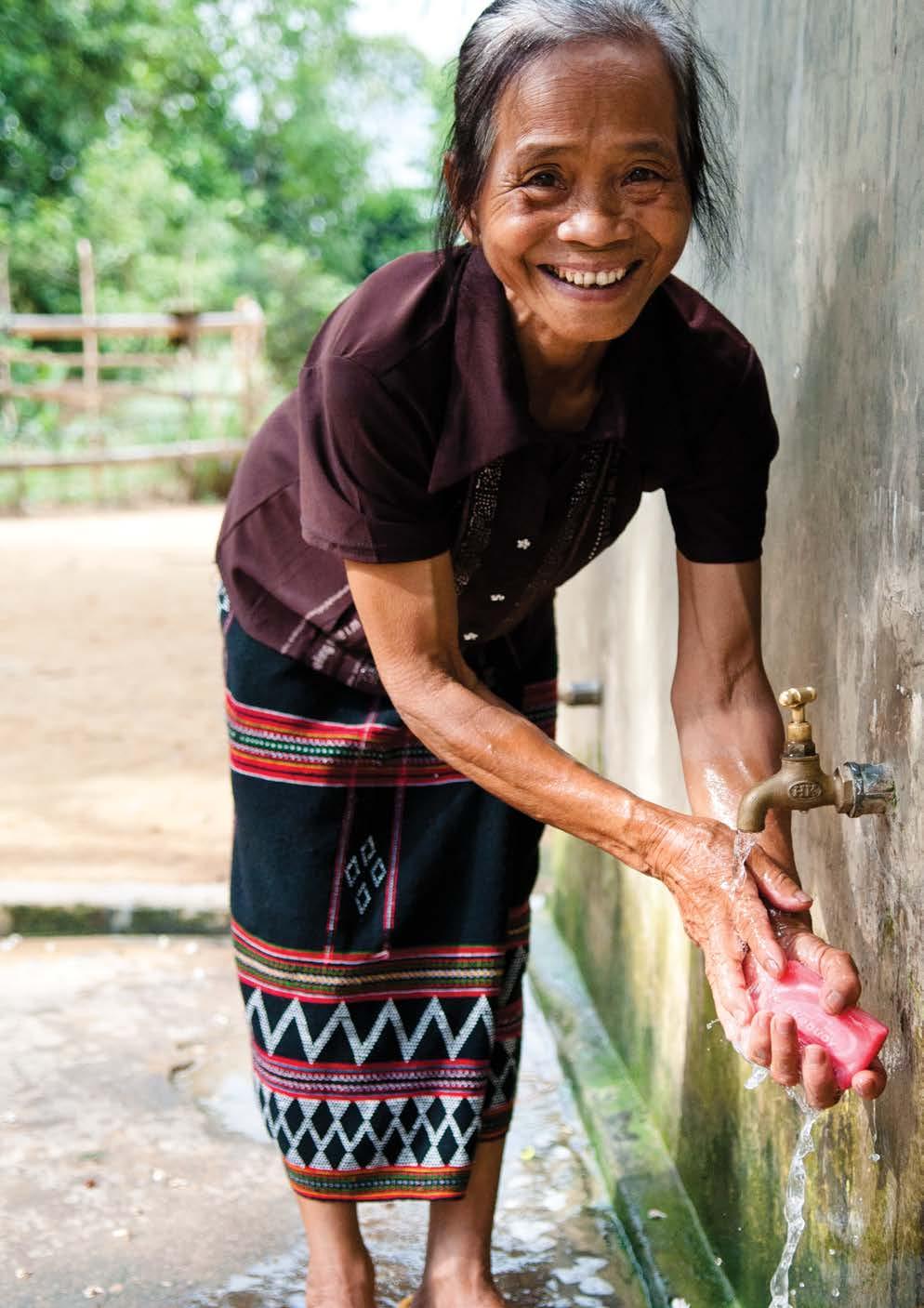
June 2018
Africa Inception Phase Version
This book belongs to:
For further information and to provide feedback, please contact Plan International Australia WASH team at WASH@plan.org.au
This booklet was compiled by:
Lee Leong (Senior Advisor—WASH Program Manager),
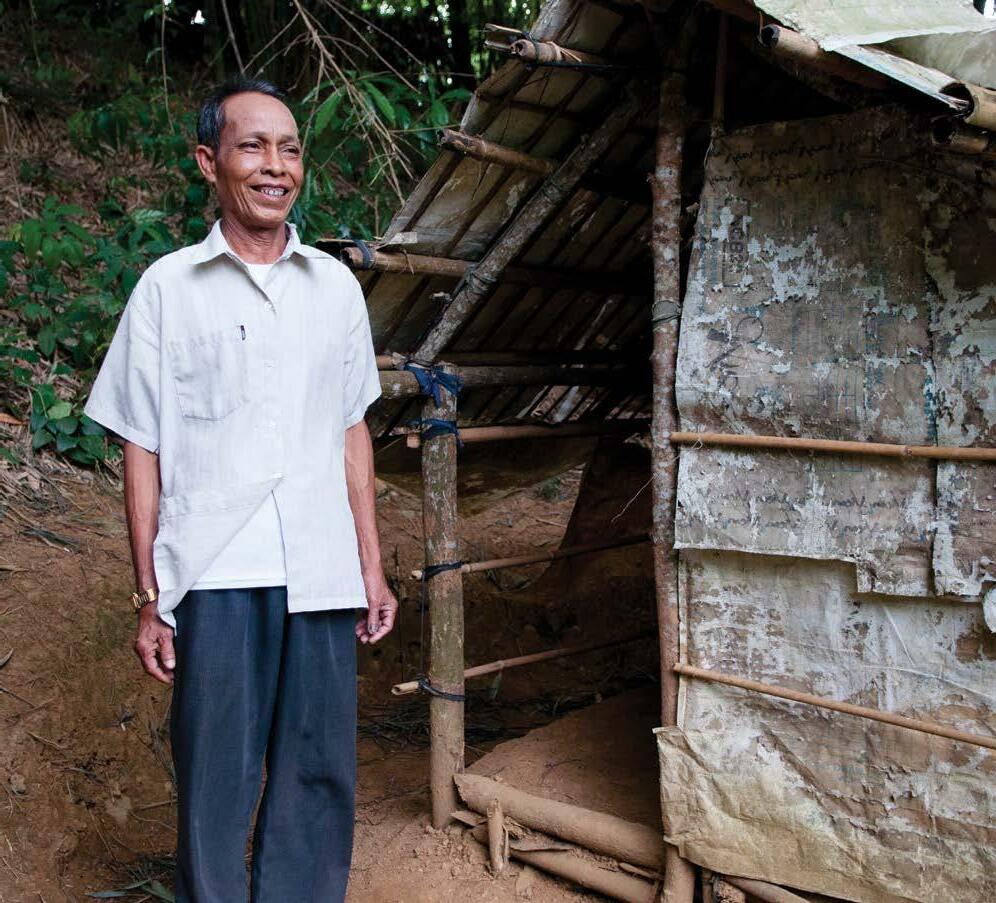
Deborah Elkington (Senior Advisor—Gender Equality and Inclusion),
Krissy Nicholson (former WASH Program Manager),
Elizabeth Hogan (former M&E Advisor),
Emma Thomas (former Learning and Inclusive Practice Manager).
Acknowledgements: Plan Vietnam; Matthew Bond and Claire Rowland.
2 Gender and WASH Monitoring Tool INTRODUCTION
Plan International Australia (Plan Australia) would like to share the Gender and WASH Monitoring Tool (GWMT). Promoting gender equality demands significant attention in every WASH intervention as gender relations are integral to the effectiveness and sustainability of WASH. The literature suggests that measuring change in the context of gender relations presents ongoing challenges for monitoring, evaluation and learning (MEL). Plan has taken the opportunity to develop an explicit focus on monitoring changes in gender relations in WASH. We are continuously looking to improve the tool, share lessons and challenges identified to date, and invite reflections and feedback. We hope you find the GWMT helpful and inspiring for your own work in gender and WASH.
INTRODUCTION BACKGROUND
Plan Vietnam and Plan Australia have been testing and using a participatory GWMT since 2011. The need for the tool arose as staff recognised the gaps and challenges of measuring progress towards gender equality in WASH projects. It was found that while WASH monitoring was able to identify a range of practical changes for women and men in households and communities, the existing project monitoring approach was not sufficient to monitor strategic changes in gender relations (i.e. those that relate to power relations between women men). Discussions with other WASH development actors in Vietnam highlighted that this was a shared challenge. In addition, a number of internal organisational drivers and commitment such as Plan International’s new Gender Equality Policy at that time supported the opportunity to address this identified gap. Plan International has since updated it’s policy -entitled ‘Global Policy on Gender Equality and Inclusion 2017-2022’ with a related strategy ‘Plan International Strategy 100 Million Reasons’. These documents clearly establish Plan’s commitment to proactively and explicitly challenge the root causes of gender and other forms of inequality. Within this current organisational policy and strategy, more attention has been given to intersectionality, in order to promote more equitable gender and power relations. This includes for sexual and gender minorities (SGM). The GWMT remains relevant to date as gender remains the largest form of discrimination, and is a starting point of Plan’s analysis before seeking to intersect with other forms of marginalisation. Moving forward, Plan Australia seeks to explore ways to consider greater intersectionality within the GWMT, including SGM.
To date, the tool has been continuously updated by Plan Australia staff and consultants working with Plan Country Office staff and counterparts based on iterative learning from applying and reviewing the GWMT (since 2011 to present). This version of the tool (June 2018) represents the latest version of the tool. The GWMT has been used and adapted to various contexts in Asia, Africa and the Pacific including in ethnically diverse communities, and sighted as good practice in several external documents.
Gender and WASH Monitoring Tool 3 INTRODUCTION
WHAT IS THE GENDER AND WASH MONITORING TOOL (GWMT)?
The GWMT enables local project staff and Government partners to explore and monitor gender relations with women and men in implementation of WASH related initiatives. It comprises a series of participatory rural appraisal (PRA) activities (in this booklet) as well as preparatory training. Refer to ‘Preparatory Training: Gender and WASH Monitoring Tool (GWMT), A Sample Trainer’s Guide’ if you are a trainer looking to introduce the GWMT into your program/project.
The GWMT seeks to address the following dual aims:
1) In communities:
To explore and raise awareness about gender roles and relationships in household and community WASH activities.
To promote (aspirations for) gender equality by providing opportunities for women and men to discuss gender relations and to set their own agenda for change.
2) For WASH staff and partners
To develop their understanding of, and skills in, gender analysis and the role that WASH can play in promoting gender equality.
To develop practical skills for gender monitoring (including monitoring changes in gender relations).
To collect sex-disaggregated information about strategic gender changes, assess changes over time and utilise information to improve practice.
4 Gender and WASH Monitoring Tool
It is anticipated that the tool will be used every 6 to 12 months with data developed at the first community meeting providing the baseline information. This includes identifying men’s and women’s shared aspirations for greater gender equality in WASH activities and decision making at the household and community level. Information from sequential use of the GWMT can be used to compare against the baseline information for change, as well as comparing the ‘snapshot’ across different communities with regards to gender relations, where the GWMT is being used within a project/program’s context.
IMPORTANT NOTE
The GWMT is not designed or intended to be a stand-alone tool for gender monitoring in WASH. Rather, it should be seen as one tool that can contribute to an intervention’s overall approach to addressing and monitoring changes in gender relations.
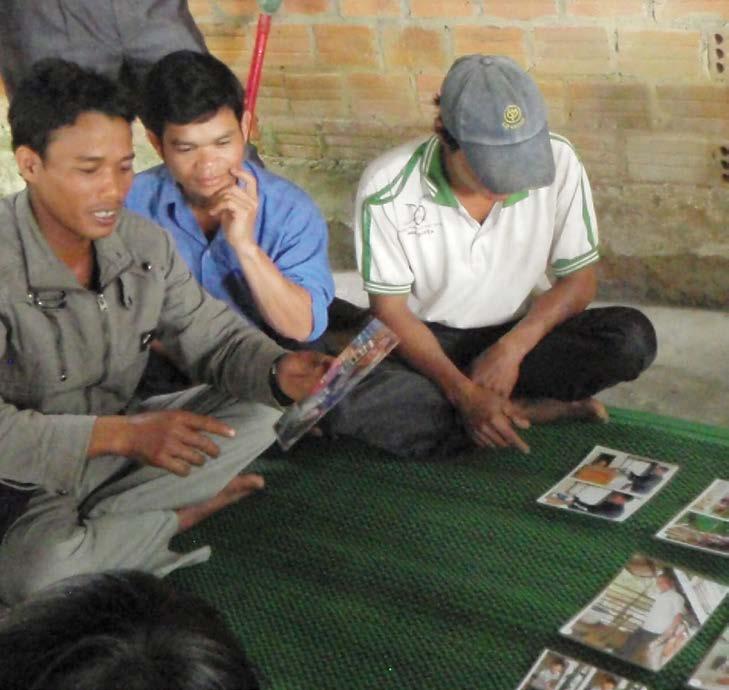
Gender and WASH Monitoring Tool 5 INTRODUCTION
GWMT PRINCIPLES
The GWMT builds on four key principles of a WASH Resource Guide developed by the International Women’s Development Agency (IWDA) and the Institute of Sustainable Futures1. These four principles are provided in Table 1:
Principle Description
Principle 1: Facilitate participation and inclusion
Principle 2: Focus on how decisions are made
Principle 3: See and value differences
Focus on ways of working that enable women, men, girls and boys to be actively involved in improving their water, sanitation and hygiene situation.
Use decision-making processes that enable women’s and men’s active involvement, within the project and activities.
See, understand and value the different work, skills and concerns of women and men related to water, sanitation and hygiene.
Principle 4: Create opportunities Provide space and support for women and men to experience and share new roles and responsibilities.
GWMT INDICATORS
The GWMT is designed to generate data for four key strategic gender indicators based around the principles:
Indicator 1: Level of shared WASH workload in the household
Indicator 2: Level of participation in WASH activities in the community
Indicator 3: Level of shared WASH decision making in the household
Indicator 4: Level of women’s leadership in the community around WASH
6 Gender and WASH Monitoring Tool INTRODUCTION
Table 1: Principles that the GWMT was built on (Halcrow et al 2010)1
1Halcrow, G., Rowland, C., Willetts, J., Crawford, J., and Carrard N, 2010, Resource Guide: Working effectively with women and men in water, sanitation and hygiene programs, International Women’s Development Agency and Institute of Sustainable Futures, University of Technology Sydney, Australia.
WHY IS IT IMPORTANT TO FOCUS ON STRATEGIC CHANGES?
WASH projects have traditionally focused on seeking practical changes in gender relations (e.g. number of women on WASH committees), and not given sufficient attention to contributing to strategic changes in gender relations (e.g. extent to which women have decision making power on WASH committees). WASH projects should focus on seeking both practical and strategic changes in gender relations as they are both crucial, interlinked and needed to contribute to gender equality and inclusion. Hence it is important to measure both types of changes to understand if a WASH projects is indeed contributing to such changes as intended and revise project approaches as needed.
OUTLINE OF THE GWMT STEPS
The GWMT comprises a series of 8 steps, which are grounded within the four gender principles and participatory monitoring approaches. Preparation for the meeting is outlined in Step 1, although this is done prior to the community meeting. Steps 1-6 include PRA activities and discussions within a community setting. Steps 7 and 8 are undertaken post the community meeting. These steps are related to analysis of the data and integration with the WASH Monitoring, Evaluation and Learning (MEL) system for monitoring and planning purposes. Diagram 1 displays the steps of the GWMT within the community meeting (i.e. the PRA activities), preparatory steps and using the data within a project/ program’s MEL system.
Gender and WASH Monitoring Tool 7 INTRODUCTION
Diagram 1: Outline of the GWMT process
Gender and WASH Monitoring Tool
Regular monitoring process within a project’s monitoring, evaluation and learning framework
Facilitators’ Meeting
(After Community PRA Activities)
Step 7. Analysis of community’s current situation and progress towards gender equality
Community PRA Steps
Step 1. Introduction
Step 2. Identifying women’s and men’s workload in household and community WASH activities
Step 3. Roles in household WASH decision making
Step 4. Participatory analysis and identifying gender equality aspirations
Step 5. Sharing results in the plenary
Project Implementation Team
Step 6. Close the meeting
Step 8. Integration with the MEL system and data utilisation
Preparatory Training: GWMT –A sample trainers guide
For new GWMT users and refresher trainings as needed
Preparation + Adaptations
Preparatory/Refresher GWMT Training
For project implementation team (the GWMT facilitators and note takers being trained)
GWMT training team undertake preparations and start adaptation of the GWMT to suit project context*
* Please note preparation and adaptation of GWMT can take several months with intensive support.
Preparations and adaptations to the GWMT as needed to suit project context and learning.
8 Gender and WASH Monitoring Tool
GWMT community meetings
The GWMT provides the space for community participants to reflect on gender relations within their separate single sex groups that are further disaggregated by age (known as sub-groups). Ages for each sub-group is specific to individual contexts:
a. Young women
b. Young men
c. Middle aged women
d. Middle aged men
e. Older women
f. Older men
In selecting participants for the community meetings, inclusive approaches are important and attention should be given to ensuring and supporting the most marginalised women and men are able to participate (e.g. people with disability, people with diverse sexual identity, etc). The most marginalised groups in a community also depends on how a project has identified and defined margainalisation. Our experience has shown working inclusively and ensuring the most marginalised people are at GWMT community meetings can be challenging and it is important to be aware of our unconscious biases (i.e. everyone carries with them a level of biases based on our experience, socialisation, etc.), and of potential limitations in our assumptions or facilitation approach. This can include re-thinking creative ways or additional support needed to ensure the most marginalised within a community can attend and actively participate within the GWMT sessions. Also of critical importance is ensuring a ‘do no harm’ approach when seeking to have inclusive community meetings (e.g. individual may not want to self-identify as a particular marginalised group). Alternative ways may need to be identified for engaging some marginalised groups in the GWMT or other WASH monitoring including working with specialist or representative organisations.
The number of participants in each sub-group can be determined by context. For example, in Vietnam Plan had six participants in each sub-group. This was the number of participants sub-group facilitators felt comfortable to facilitate. Hence this brought the total participants within each community meeting to 36 people.
Gender and WASH Monitoring Tool 9 INTRODUCTION
Lessons Learnt
In developing and using the GWMT, some of the key lessons for Plan to date include:
1. Organisational commitment It is vital to invest and nurture explicit commitments made to improving gender equality within an organisation’s practice. The development and application of the GWMT has provided healthy input into ongoing organisational discussions of contemporary approaches to monitoring, evaluation and learning, and highlighted the importance of ensuring the GWMT indicators are incorporated into a WASH project’s M&E framework. Ongoing use of the GWMT has required adequate human resources (including internal gender expertise), budgeting and work planning.
2. Government partners Plan has found that there has been a positive response with Government counterparts at the community level having a genuine willingness to learn and a strong interest in improving their practice. The GWMT also represented an opportunity for Government staff to strengthen their core roles in Government. For example, for the Vietnam Women’s Union, improving gender outcomes at the community level aligns with their core work.
3. Gender champions Consistent with implementing other gender initiatives, Plan’s experience has been that gender champions are good enablers. Gender champions can work at multiple levels including community, government and organisational.
4. Adapting to local context: In the development of the GWMT a number of important local contextual considerations were taken into account through discussion with Plan Country Offices and Government partners. For example the introduction of photo cards responded to the variable literacy rates in areas in which Plan Vietnam works. The photos were introduced in order to address barriers to participation based on literacy. The photo cards are also designed to reflect positive WASH images of ethnic men and women, and to challenge gender stereotypes, by depicting both men and women in all age groups undertaking the full range of WASH activities. Adapting to local contexts can also mean looking for opportunities to promote diversity (e.g. showing women and men with disabilities undertaking positive WASH activities within the photo cards).
10 Gender and WASH Monitoring Tool INTRODUCTION
5. Safe space: The GWMT structure was revised after trials to minimise the potential for adverse impacts arising from discussions of gender relations which can stimulate a range of opinions. Implementation of the tool acknowledges different perspectives to be noted and to ensure that the safety of all participants is appropriately supported. This includes collating results from each sub-group to de-identify individuals within that group. It is also recognised that the level of facilitation skills is important (see below).
6. Ongoing training and support for facilitators: It is important that a regular training program for the GWMT is established. Overtime, deterioration of the GWMT process is inevitable and a refresher-training program is needed to maintain the quality of the process (including maintaining safe spaces for participants) and to provide facilitators with additional and ongoing support in implementing the tool. It is also important to run regular GWMT training to adequately resource the process with skilled facilitators (e.g. to account for turnover of staff).
7. Gender concepts: The tool does not require facilitators (project implementing staff) to be gender specialists. In trialling the GWMT, Plan provided preparatory training for facilitators to gain increased awareness and knowledge about gender equality through exploring the principles and practicing the steps of the GWMT with support from Plan gender specialists. The tool has provided an important opportunity for demystifying gender monitoring for WASH implementing staff. Whilst facilitators had previously undergone basic gender training as part of the project’s activities, the understanding and confidence for facilitators around gender equality concepts and gender analysis skills requires ongoing support.
Whilst the GWMT uses binary terms when describing gender, it is acknowledged that there are people of diverse sexual orientations and gender identities. Plan is keen to explore additional/future plans to expand the use of the GWMT to have an even greater inclusive reach.
8. Facilitation skills: The quality and depth of discussions within the GWMT activities largely rests on the ability of individual facilitators. Plan Vietnam is exploring opportunities within its WASH program to build ongoing support for improving gender monitoring facilitation skills for WASH monitoring staff. This includes exploring opportunities for incorporating the GWMT within the existing Community-led total sanitation (CLTS) training and follow-up support.
Gender and WASH Monitoring Tool 11 INTRODUCTION
9. Integration with the WASH MEL system and using the GWMT data: In order to make best use of the data that is collected through the GWMT, it is important to think through, document and resource the process for collating, analysing, reflection and learning, reporting and dissemination and how the data will be utilised for gender and project planning. It is also useful to determine which key stakeholders should participate in these MEL processes and at what level. The GWMT data should be used alongside other M&E information to enable the development and monitoring of integrated and responsive gender equality strategies within the WASH project/program.
10. Community Feedback Mechanisms: Having a strong community feedback mechanism integrated as part of WASH M&E activity will maximise the opportunity to progress gender equality outcomes and strengthen downward accountability. A community feedback process will enable community members and village leaders to use the data collected through the GWMT (and other M&E activities) for their own planning and monitoring purposes thus supporting and reinforcing the gender equality strategies developed within the WASH program. It will also provide additional opportunities for men and women to discuss gender relations and provide a space for wider engagement and participation in the GWMT.
LOOKING FORWARD
Plan will continue to refine and adapt the GWMT based on ongoing use, reviews and application in different contexts. We are keen to explore opportunities for further supporting local communities in the use, and or adaptation of the tool for their own purposes.
We are happy to share learnings and refinements of the tool and if you choose to test the tool yourself, we appreciate your feedback. Please refer to inside front cover for contact details.
12 Gender and WASH Monitoring Tool INTRODUCTION
GENDER AND WASH MONITORING TOOL (GWMT) STEP BY STEP
Roles of facilitators and data recorders
During Plan’s use of the GWMT there were six facilitators and six data recorders, each working with a different sub-group (hence the rest of this booklet refers to six sub-groups). Preferably female facilitators work with the women sub-groups, and male facilitators work with the men sub-groups. This approached has worked well.
MEL Coordinator and WASH Project Manager (or equivalent designated)
The responsibility of the MEL Coordinator/ Project Manager role in taking on the GWMT is to ensure the integration of the tool’s outcome with the broader WASH MEL system. This includes supporting the collation and analysis of the GWMT and other MEL data; facilitating reflection, learning and feedback mechanisms on the evidence base; monitoring, reporting and disseminating the GWMT findings; and determining how the data be used to inform project planning. The MEL Coordinator should provide the Lead Facilitator with access to the previous monitoring reports as part of the GWMT preparation process. This information will be used to prefill Record Sheet 1.
Role of the Lead Facilitator (1 person):
The Lead Facilitator’s role is to lead the GWMT community meeting including opening and introducing key staff at each community meeting, and facilitating the plenary sessions. The Lead Facilitator should prepare the team for the planned community meeting, including filling out Record Sheet 1 and discussing the learning and results from the previous GWMT visit (if applicable) with the other facilitators. The Lead Facilitator also leads one sub-group during Steps 2 and 3 of the tool. As a form of gender role modelling, Plan encouraged rotating the Lead Facilitator to ensure female staff got the opportunity to play this role.
Co-Facilitators (5 people):
The Co-Facilitators work closely with the Lead Facilitator and Data Recorders. They are responsible to lead one sub-group each (e.g. older men). Where possible, male facilitators should be paired with the male sub-groups, whilst females should work with the female sub-groups. Thus, together with the Lead Facilitator, it is ideal to have a facilitation team of 3 females and 3 males.
Gender and WASH Monitoring Tool 13 INTRODUCTION
In plenary sessions, Co-Facilitators should ensure their group’s view is represented, and if necessary gently encourage participants to speak up. As with the Lead Facilitator, Co-Facilitators will ensure that participation is maximised within their sub-groups and that everyone has an opportunity to input their opinion. Co-Facilitators may also need to play the role of Data Recorders if there is not enough staff.
Data Recorders (6 people):
Data Recorders (ideally 6 people) work with the Co-Facilitators and actively observe and take detailed notes of the discussion and outcomes of each session on the record sheets. Preferably, there will be one Data Recorder to one Co-Facilitator to ensure the sub-¬group’s contribution is recorded. This is an important role as information will be used for ongoing purposes, therefore recordings must be accurate and of a high quality. As mentioned above, in project/ program contexts where it is not realistic to have 6 Data Recorders for each time the GWMT is used within a community, Co-Facilitators can play the role of Data Recorders and/or other suitable adaptions of the GWMT into a local setting.
Important Note
The Facilitators (Lead and Co-Facilitators) should facilitate community discussions using steps within this GWMT rather than asking alternative questions. The questions in this guide have been tested to best facilitate these discussions (e.g. maintain a safe space, not asking leading questions, etc). Within this GWMT, these discussion questions can be easily identified with the word: ASK
If you see the toilet symbol in the GWMT steps
When you see the words “monitoring question” and this toilet symbol, it indicates additional guidance for using the GWMT in follow up community visits. This guidance is not intended to be utilised when implementing the GWMT for the first time.

Accompanying documents
At the back of this booklet:
Materials list — list of materials needed to be prepared for using the GWMT
Photo card list — list of the photo cards that Plan is currently using with the GWMT. Consider adapting and translating photo card sets to be appropriate for your context.
Clock cards — used in Step 2. Consider translating clock cards to be appropriate for your context.
Full set of record sheets — for ease of photo copying
14 Gender and WASH Monitoring Tool INTRODUCTION
GWMT PREPARATION AND IMPLEMENTATION CHECK LIST
GWMT preparatory steps:
Gain organisational commitment for the GWMT, including for leadership.
Allocate required resources for ongoing use of the tool (budget, human resources etc).
Discussions with project partners (including government counter parts and local CSOs) who will form part of the implementation team are required to gain commitment before training and roll out.
Establish and facilitate training program (including the GWMT preparatory and refresher training sessions), including identifying and gain commitment of master trainers to run ongoing sessions.
Train staff and partners on the use of the GWMT and ensure partners and staff have undergone gender training prior the GWMT preparatory training session.
Adapt and translate GWMT including photo cards and clock cards to suit project context.
Establish how the GWMT (and indicators) will be integrated into the WASH program MEL framework. This should include outlining the process for data collation, analysis, reflection and learning, reporting and dissemination and use of the data. Ensure a community feedback process is built into the plan.
Develop an implementation plan for the GWMT community visits, including identification of communities and the frequency with which they will be monitored.
Prior to the GWMT community visit
Access previous GWMT reports for the selected village and input previous GWMT data into record sheet one.
Ensure you have all the materials for the GWMT meeting, including clock cards, pictures and data record sheets.
Lead facilitator to have a briefing session with GWMT facilitation team prior to community meetings to discuss community context, identify facilitation and data recording roles, refresh on process, discuss previous GWMT findings and learning and adapt/contextualize the tool, as necessary.
Agree on the WASH decision making example to be used in Step 3 of the tool ahead of time. The example should be based on a WASH activity that requires a household decision. The example should be appropriate so that all subgroups can discuss. (See step 3 for more details).
Gender and WASH Monitoring Tool 15
Logistics
Ensure that appropriate government permission is granted, as required.
Communicate with the communities selected for the monitoring visits, including briefing them on the purpose of the GWMT, selection of participants as per criteria, time it will take, how often the visits will occur, community feedback processs, etc.
Liaise with community representative to ensure equal numbers of men and women of different age sub-groups are selected and prepared prior to the visit for each selected community, such as 36 margainlised community members (6 in each age group).
Ensure informed consent is gained by community members.
Prepare logistics for the monitoring visit (eg. transport, place for meeting and smaller break out places, etc.
Take appropriate measures to ensure the selection of community participants, include those who may otherwise be marginalised. For example people living with disabilities or particular ethnic or minority groups. Ensure preparation is taken to enable their inclusion in the GWMT.
Post the GWMT monitoring visit
Provide the record sheets to MEL Coordinator/Project manager (or designated equivalent) for storage and collation.
Project Implementation Team to analyse qualitative and quantitative GWMT data and integrated into the WASH MEL system.
Undertake review of the GWMT data (and other M&E information) as part of WASH program learning and reflection processes to make sense of the data, track changes and to identify key areas of learning.
Prepare reports and disseminate gender monitoring information to key stakeholders including community feedback process.
Use the data to develop/adapt gender and WASH program activities.
16 Gender and WASH Monitoring Tool
STEP 1 PREPARATION AND INTRODUCING THE ACTIVITY TO THE COMMUNITY
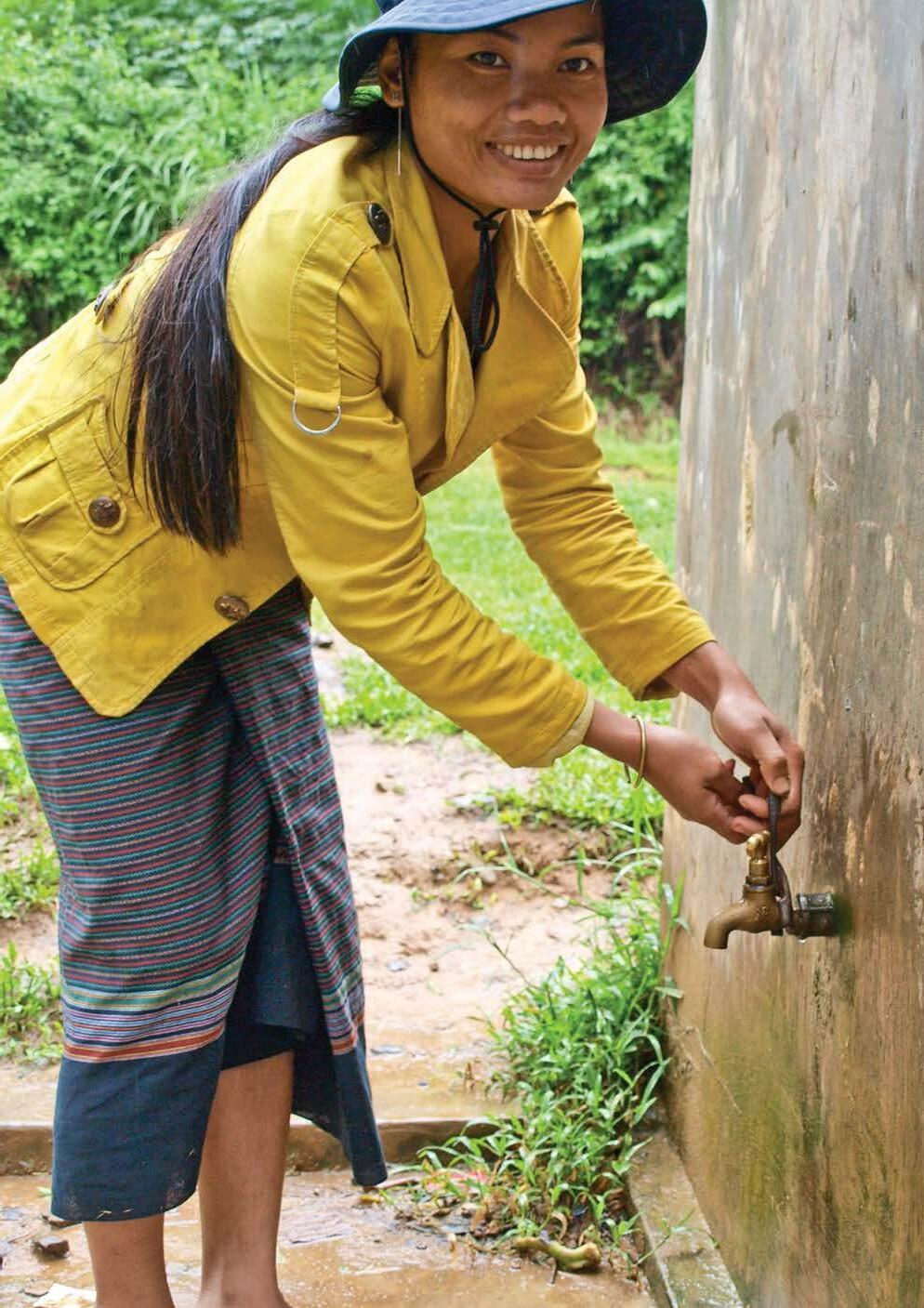
STEP 1 PREPARATION AND INTRODUCING THE ACTIVITY TO THE COMMUNITY
Time: 15 minutes (for community session)
Materials: Data record sheet 1 filled out prior to community visit
Format: Briefing with facilitators and data recorders prior to community meeting
Plenary (with the whole group together) at the commencement of the meeting
Purpose: To be prepared for the community visit
To brief the community and ensure they are clear about the purpose of the visit and what role they will play during the activity.
By the end of Step 1, participants should:
Understand the purpose of the activities that will take place today and length of time


Agree on ways of working together
Know that the GWMT is part of a long term monitoring process and that there will be six-monthly visits (or another agreed timeframe)
Understand that this is a part of the existing WASH program
18 Gender and WASH Monitoring Tool STEP 1
WHAT TO DO
Prior to the community session:
The Lead Facilitator to fill out Record Sheet 1 with details of the community and liaising with the MEL Coordinator/Project Manager to access the previous monitoring reports/data for this location. Attach the report or summarise the findings in the template below.
The Lead Facilitator to host a briefing session with the facilitation team to discuss community context, identify GWMT roles (Facilitators/Data Recorders), refresh on the facilitation process, discuss previous GWMT findings and learning and contextualise/adapt the tool as necessary to the location/ participants/and stage in the monitoring process (baseline/follow up visit). This process could be supported by the MEL Coordinator/Project Manager.
At the community session:
1.1 Lead Facilitator to introduce the facilitation and data recording team and thank the community for their time.
In your own words then explain the process. For example: “We are here today to talk about the water, sanitation and hygiene situation for women and men in your community. We will be undertaking a range of activities that will look at ways to improve WASH. We also want to explore who has responsibility and decision making ability around WASH activities within the family and community. We will break into separate groups – younger and older men, younger and older women, so that you can share your experiences.”
Undertake and acknowledge local greetings and traditions as required for this context.
1.2 Explain the outline the timeframe relevant to your own WASH context.
For example: “This is the first part of the process. We will repeat this activity every six months (or another agreed timeframe). Undertaking this activity regularly will help to measure any change over time. This is one of many different tools that we will be working with you on, to improve WASH in your community” (mention other parts of the program such as CLTS or water improvements that may be running concurrently). If this is trial run of the GWMT for Facilitators and Data Recorders then this should be made clear to the community members.
Gender and WASH Monitoring Tool 19 STEP 1
1.3 Explain that we will be spending 2.5 hours together and it is important to agree on how we work together. For example:
Everyone’s participation is equal
Everyone listens and respects each other’s opinions
One person speaks at a time
Children are free to observe and sit in the meeting, however we do not expect them to join in the activities or discussion
Does the group agree with this?
Is there anything else the group would like to add?
1.4 Request permission to take photos to document the process. Ask if anyone does not want to be in photos, which is ok. Explain that names will not be added into the record sheets to protect privacy.
1.5 Ask if anyone has any questions or concerns.
20 Gender and WASH Monitoring Tool STEP 1
RECORD SHEET 1 PREPARATION AND INTRODUCING THE ACTIVITY TO THE COMMUNITY
To be filled out by the Lead Facilitator (in liaison with the MEL coordinator/Project Manager) prior to the meeting as part of the preparation for the session. This includes documenting/attaching previous GWMT data and discussing the findings and learning from the previous visit with the Facilitation team prior to the meeting (if applicable).
Village name:
Commune; District; Province:
Frequency of GWMT visits:
Date of GWMT visit:
Date of previous GWMT visit (if applicable):
Next data of GWMT visit planned:
Lead Facilitator:
Name of Co-Facilitators
Young women’s group
Middle aged women’s group
Older women’s group
Young men’s group
Middle aged men’s group
Older men’s group
Name of Data Recorders
RECORD SHEET 1 Gender and WASH Monitoring Tool 21
Summary of results and learning from previous GWMT visit:
If available, attach the previous monitoring report for this location. Note key areas from the previous visit to follow up in this monitoring visit.
Process question:
If this is a first visit, what are likely to be the difficulties in facilitation the GWMT?
Monitoring question:
If this is a follow up visit, were there any previous challenges with facilitating the GWMT at this location? What strategies could be used to support the monitoring visit in this location (any adaptations etc)? Go over the steps and roles with the team, including questions required for baseline visit and those for ongoing monitoring purposes.
To be filled out at the community:
No. of participants Female Male

Other comments
e.g. any concerns/questions raised by the community at GWMT meeting
22 Gender and WASH Monitoring Tool RECORD SHEET 1
STEP 2 IDENTIFYING WOMEN’S AND MEN’S WORKLOAD IN HOUSEHOLD AND COMMUNITY WASH ACTIVITIES
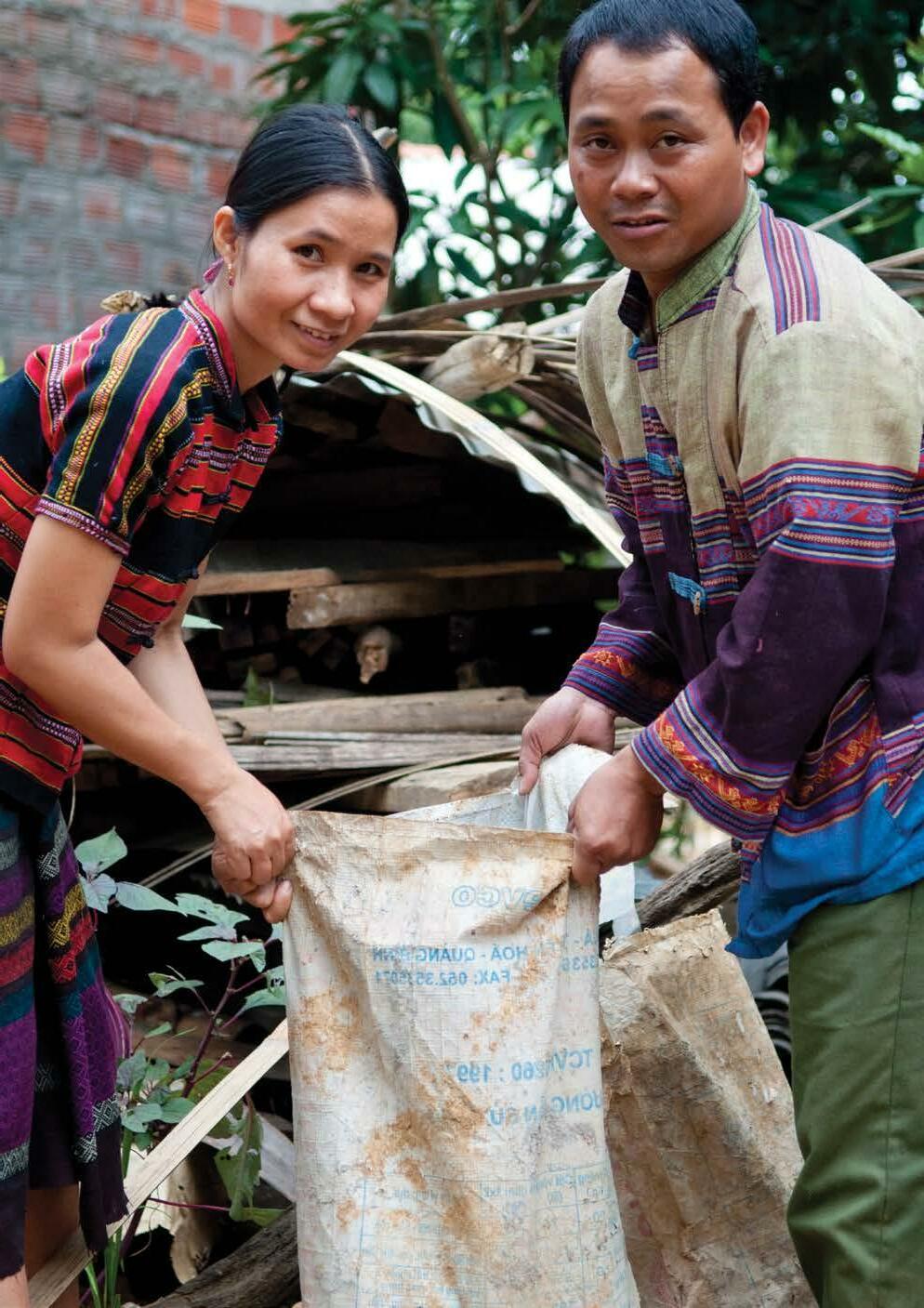
STEP 2 IDENTIFYING WOMEN’S AND MEN’S WORKLOAD IN HOUSEHOLD AND COMMUNITY WASH ACTIVITIES
Time: 30 minutes

Materials: 6 x Photo card set (3 female set and 3 male set)
30 x Blank card set (5 per sub-group)
18 x Clock picture card (3 per sub-group)

Marker pens
Format: 6 sub-groups (divided by sex and age –young women, middle age women, older women, young men, middle age men and older men).
Purpose: To learn about the participation of women and men at household and community level, and representation in leadership roles.
By the end of Step 2, we will know:
The range of time spent by women and men of different age groups on WASH activities in the household and communities (including new activities); Who is participating in community WASH activities; Who is represented in WASH leadership roles in the community.
24 Gender and WASH Monitoring Tool STEP 2
young women young men middle age women middle age men older women older men
WHAT TO DO
2.1 Lead Facilitator to divide participants into six sub-groups:
Three groups of women (young, middle aged and older) and three groups of men (young, middle aged and older). It is important that where possible, Facilitators and Data Recorders are the same sex as the members of each sub-group. This should have been organised prior to the meeting (i.e. invitations to participants ensured equal representation in each group). Ask the groups to join their allocated Co-Facilitator and Data Recorders. The groups should then move into separate areas to work.
2.2 Explain the activity:
Co-Facilitators to ask their group to sit in a circle and spread the photo card set on the ground (inside the circle) and explain each card. Put the clock cards to one side. Explain in your own words: This activity will look at what WASH activities you do within the household and community; and how much time you spend on these activities. We will be using these photo cards, as well as clock cards to record our findings. This will then be shared with the other men and women’s sub-groups to compare before we all join together with a list of things we would like to communicate. Card set-up within the circle:

Gender and WASH Monitoring Tool 25 STEP 2
2.3
Select 2 cards:
Ask each group member to select two cards: One that represents the WASHrelated work they do regularly within the household; and one that represents the WASH-related work they do regularly in the broader community. Ask if there are any WASH-related tasks missing that group members undertake. If so, draw or write this action on a blank card. Move the non-selected cards away.
Note: There are only a couple of community WASH photo cards so some group members will only have one card (i.e. household WASH task card).
2.4
Grouping photo cards:
Inside the circle, group the selected photo cards into 2 categories of household-level activities or community-level activities. Estimate the time taken for each activity: Ask the group “How much time does it take to do this?”
For household-level activities: Number of hours in a days
For community-level activities: Number of hours in a month
Move irregular or ‘one-off’ activities (e.g. building a toilet) into a separate category.
2.5 Fill in the clock cards:
For the regular household level activities, noting the minimum and maximum time (hours) spent each day on these activities for the group, write this on a clock card and place below the appropriate activity photo card. For the regular community level activities, note the minimum and maximum time (hours) spent per month for the group on all the activities combined and write this on a clock card and place below these activities.
26 Gender and WASH Monitoring Tool STEP 2
Image to come
Leadership: Ask if any sub-group members are involved in regular formal leadership activities (e.g. guiding, organising activities) related to WASH (e.g. CLTS committee meetings, or Water User Committees). If so, list these down on the blank cards. For the regular leadership activities (e.g. guiding/ organising activities), note the minimum and maximum time spent per month for the group on all the activities combined and write this on a clock card and place below the appropriate activity photo card.
For the irregular activities that may only be undertaken once: Record the list of activities, note the minimum and maximum time for the group to complete each of these activities (in hours) and who undertook them, and record separately e.g. Building a latrine. Only include activities that are unpaid work.
Note: Timings for activities may vary between different individuals within the sub-group. Therefore take the range of time for the group (i.e. the minimum and maximum) and record the average. This is important to identify diversity of experience and to understand the reasons behind the differences. The average can be quickly calculated using the following formula:
minimum time (hours) + maximum time (hours)
2
ASK: Based on the results is the range of time for workload activities discussed between the participants big or small? If a large range, discuss why the experiences differ? E.g. single headed household, large family, etc.) and record the reasons in the analysis section of Record Sheet 2.
2.6 Review the groupings and times and check with all members that this is accurate.
ASK: Do you want to change anything? Is there anything missing?
2.7 Wrap up this session explaining we will discuss these results later with the other men/women’s groups to compare. Move to Step 3.
FACILITATOR TIP
Set up group work in separate spaces so that each group can function independently and privately.
Focus on WASH-related activities (rather than general household and community activities).
Gender and WASH Monitoring Tool 27 STEP 2
RECORD SHEET 2 IDENTIFYING WOMEN’S AND MEN’S WORKLOAD IN HOUSEHOLD AND COMMUNITY WASH ACTIVITIES

This record sheet is required to be completed for each sub-group.
Sub-group for this record sheet (e.g. older women, young men)
Number of people in this sub-group
Name of Co-Facilitator


Name of Data Recorder (if different)
Time Spent
Household Activities Community Activities Leadership Activities
Range of time spent each day (hours)
Range of time spent each month (hours)
Range of time spent each month (hours)
Average time spent each day (hours)
Average time spent each month (hours)
Average time spent each month (hours)
28 Gender and WASH Monitoring Tool RECORD SHEET 2
List of Irregular WASH Activities (include unpaid activities only) Activity Amount
Group Analysis (Note. Further analysis on results in step 4)
Is the range large or small from the perspective of the sub-group? If large, discuss why the experiences differ? (E.g. single headed household, large family, etc.)
RECORD SHEET 2 Gender and WASH Monitoring Tool 29
of time to complete this activity (total hours)
30 Gender and WASH Monitoring Tool RECORD SHEET 2
STEP 3 ROLES IN HOUSEHOLD WASH DECISION MAKING
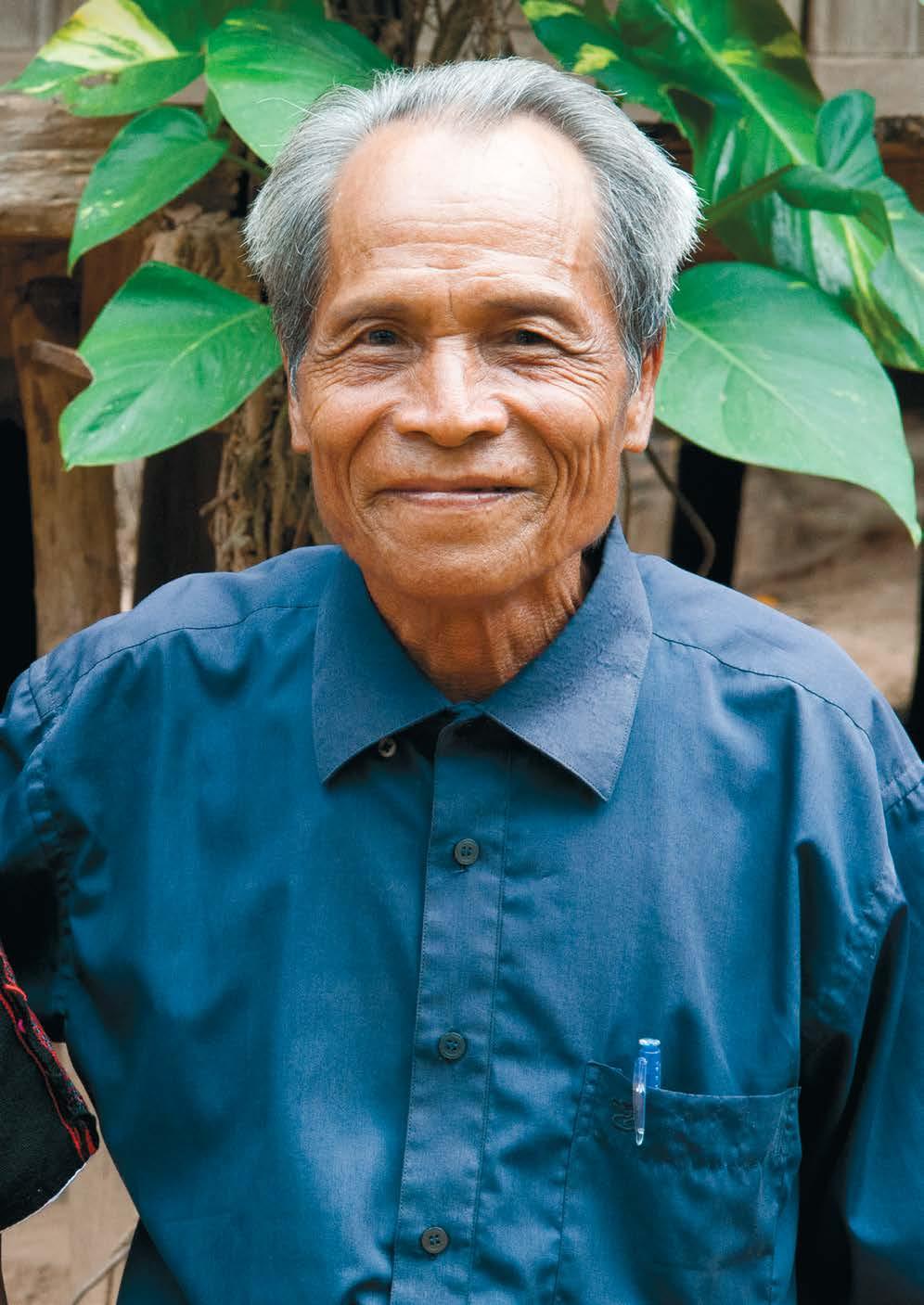
STEP 3 ROLES IN HOUSEHOLD WASH DECISION MAKING
Time: 30 minutes
Materials: 6 x Photo card set (3 female set and 3 male set)
30 x Blank card set (5 per sub-group)
18 x Clock picture card (3 per sub-group)

120 x Counters of the same size (e.g. kidney beans/ stones, water bottle tops with no logos)
20 Markers per sub-group

1 Flip chart paper Sticky tape
Format: Stay in the 6 sub-groups (divided by sex and age –young women, middle age women, older women, young men, middle age men and older men).
Purpose: To identify how women and men of different ages are involved in household WASH decision making.
By the end of Step 3, participants will have:
Identified how women and men of different ages are involved in household decision making of WASH activities. Explored perceptions of influence within households.
32 Gender and WASH Monitoring Tool STEP 3
young women young men middle age women middle age men older women older men
WHAT TO DO
3.1 Staying within the sub-groups, draw 6 rectangles on a sheet of flip chart paper. Find the 6 base photos of the range of household members from the photo card set (young woman and man, middle age woman and man, older woman and man). Tape down 1 base photo per rectangle, place the photo in the top righthand corner of the rectangle. (This can be prepared prior to the community meeting.)
3.2 Using your own words, introduce the activity. For example: “Now we have a good idea of how much time you spend on WASH activities. Next we are going to look at decision making around one of these activities. We have 20 markers, and as a group, we will be placing these markers on the pictures to help us understand who has the most influence in decision-making in your household.” Describe the decision that has been preselected by the Facilitation team e.g. to build a toilet in your household. Each sub-group should be discussing the same decision.
3.3 Find the photo card that represents the pre-selected household decision related to WASH from the picture set. Place that picture next to the flip chart with pictures of the different household members that you have set-up:
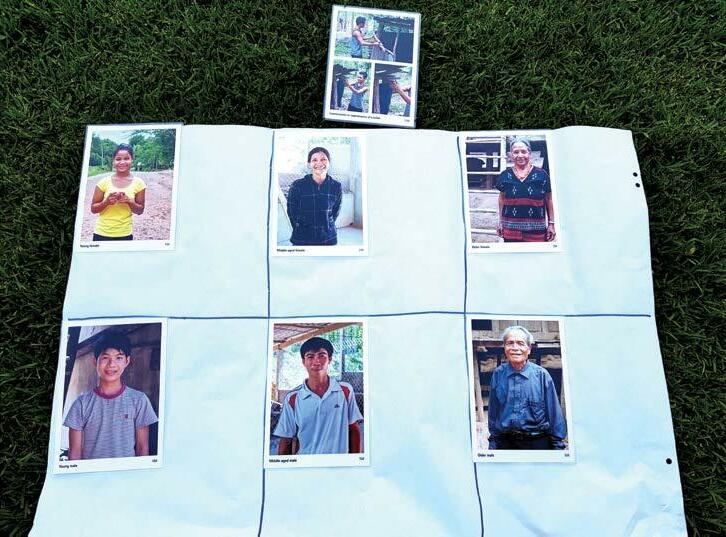
Gender and WASH Monitoring Tool 33 STEP 3
3.4 Explain to the group that there are only 20 markers and that they represent how much influence each household member typically has in that particular WASH decision i.e. many markers = large influence; few or no markers = limited or no influence. Ask the group members to agree on the spread of the 20 markers to represent the scale of influence each household member typically has in that particular WASH decision. Spread the markers to represent an ‘average’ situation for the households represented in the group (acknowledging that not all households will typify 6 people).
3.5 Facilitate a small discussion with group members asking the following 2 questions:
ASK:
Why did the group decide to spread the 20 markers as they are and what does this mean?
What does this tell us about who makes decisions?
Is this close to the situation in your household? If not, why not? (e.g. female headed households)
3.6 Prepare the results for sharing in Step 4: For each rectangle, push the allocated markers together in a circle shape. Draw a circle around the allocated markers and write the number of allocated markers inside each circle. The size of the circle represents the level of influence each household member had on the WASH decision. Move the markers off and roughly colour in the circles. The results might look like this:
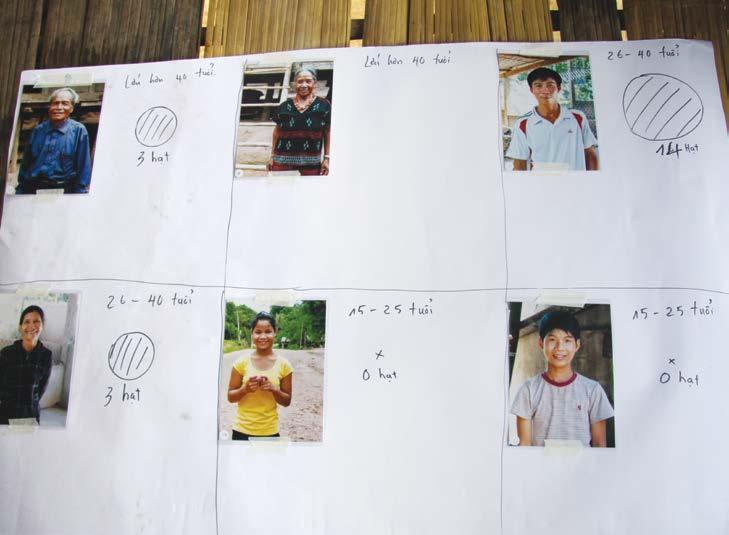
34 Gender and WASH Monitoring Tool STEP 3
RECORD SHEET 3 ROLES IN HOUSEHOLD WASH DECISION MAKING
This record sheet is required to be completed for each sub-group.
Sub-group for this record sheet (e.g. older women, young men)
Number of people in sub-group
Name of Co-Facilitator
Name of Data Recorder (if different)
RECORD SHEET 3 Gender and WASH Monitoring Tool 35
Household WASH decision
Household member Level of influence
Number of markers per member (out of 20)
Young female
Young male
Middle age female
Middle age male
Older female
Older male
Total 20
Why did the group decide to spread the 20 markers as they are and what does this mean? What does this tell us about who makes decisions? Is this close to the situation in your household? If not, why not? (e.g. female headed households)
36 Gender and WASH Monitoring Tool RECORD SHEET 3
STEP 4 PARTICIPATORY ANALYSIS AND IDENTIFYING GENDER EQUALITY ASPIRATIONS
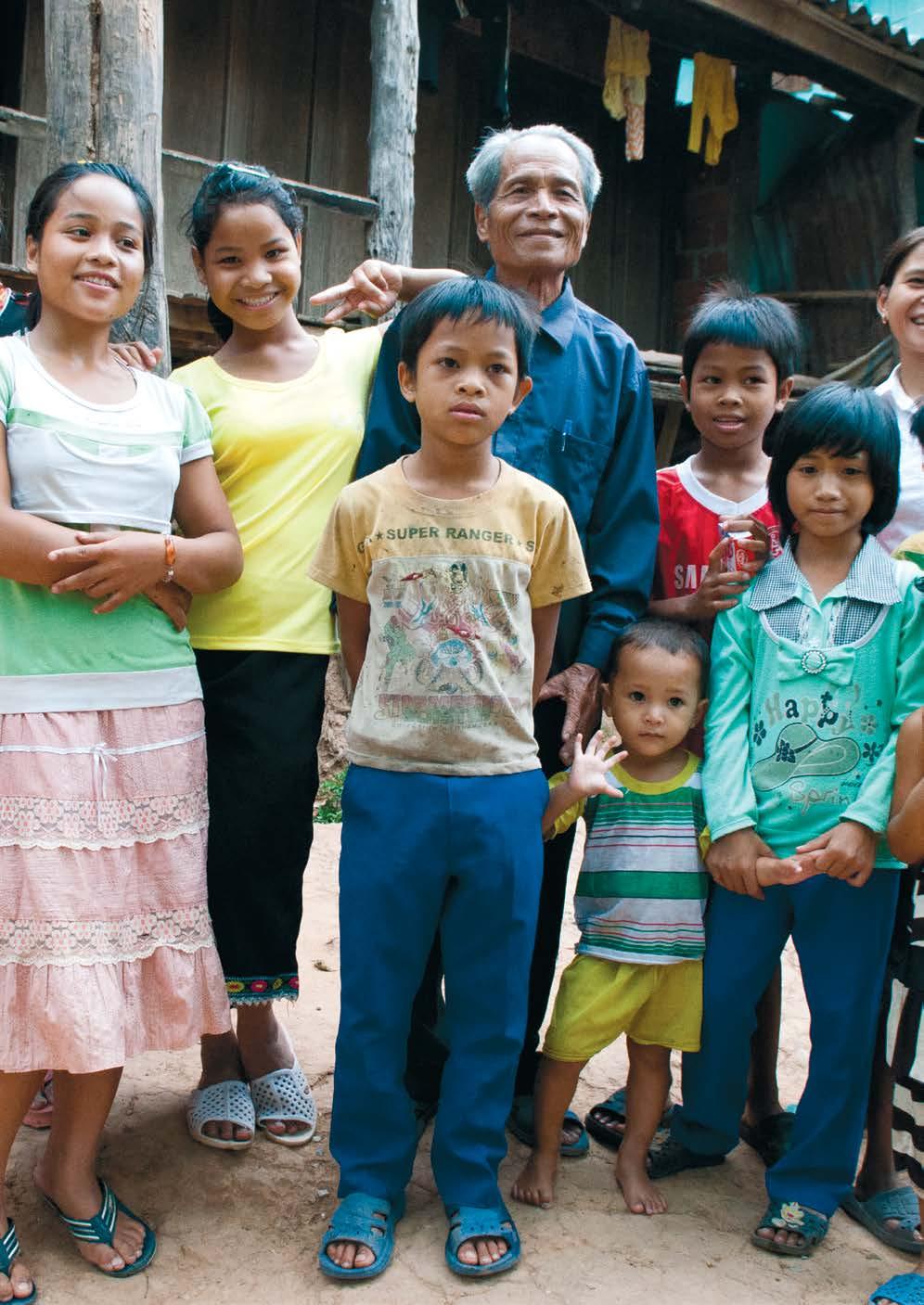
STEP 4 STEP 4 PARTICIPATORY ANALYSIS AND IDENTIFYING GENDER EQUALITY ASPIRATIONS

Time: 45 minutes

Materials: Results of Step 2 (clock cards) and 3 (flip chart) from each sub-group
Flip chart paper Sticky tape Marker pens
Format: Two sex-disaggregated groups: All women sub-groups together, and all men sub-groups together.
Male Group Female Group
Purpose: To make ‘visible’ and discuss women’s and men’s (within the different age groups) work and decision making for household and community WASH.
To analyse the data with the community and explore what the results mean for men and women in the community
To identify the future vision/expectations of men and women around the 4 GWMT indicators
38 Gender and WASH Monitoring Tool STEP 4
WHAT TO DO
4.1 Lead Facilitator to bring all the women’s sub-groups together into one group, and bring all the men’s sub-groups together into a second group. One female facilitator runs the discussion for the women’s group and one male facilitator runs the discussion for the men’s group. During the discussion, other facilitators from the other sub-groups can support their group to speak up where appropriate so that all views are represented. Be clear that these results for women and men will be communicated back to the plenary.
4.2 Data Recorder: One Data Recorder for each group should be assigned to document the responses in Record Sheet 4. This data will be used for analysis and ongoing monitoring purposes so attention must be paid to recording accurate and quality information in this step. It is therefore advisable that the other Data Recorders also take notes to support the documentation process. The information recorded in this step will be reviewed in Step 7 where there will be opportunity to fill in any gaps in the data.
4.3 Sharing results from Step 2 (workload). On the designated wall, put up the three clocks from Step 2 for each of the 3 sub-groups. Ask one group member to read out just the average of clock times (household WASH work, community WASH work and leadership WASH work) and the level of influence in decision making within the household for each sub-group.
The Lead Facilitator should point out where the women’s group and the men’s group spends most of their time with regards to WASH work (e.g. household workload) and where the group spend the least amount of time on WASH work (e.g. leadership activities).
Gender and WASH Monitoring Tool 39 STEP 4
to come
Image
4.4 Analysing the data and identifying desired changes for women and men
After recording the results it is now important to support the group to undertake a participatory analysis of the data, monitor for changes and to identify areas they would like to see change in.
The Lead Facilitator should guide the analysis of the results using the key analysis questions outlined below and organised under the four GWMT indicators.
Monitoring question must be asked in addition to the other questions on all community visits after baseline to identify and track any changes against the four indicators.
From the analysis the group will be asked to identify their aspirations for gender equality change under each indicator. One of the CoFacilitators should write up on flip charts the group’s aspirations under each indicator to be shared in the plenary.
The Data Recorder should document responses by the participants to the questions. This should involve recording the main points discussed under each indicator.
Lead Facilitator to lead the discussion.
ASK:
Indicator 1:
Level of shared WASH workload in the household
Based on the results from step 2 (clock cards) and your experience:
a. Is time spent differently or equally on WASH related household work (consider older and younger, women and men)? Why?
b. Monitoring question: Have there been any changes to the time spent on WASH related household work since the last monitoring visit (give time frame e.g. last year)? What was the change? How did it come about? Was the change positive or negative?

c. What is the group’s aspiration around the level of shared household workload between women and men?

40 Gender and WASH Monitoring Tool STEP 4
Indicator 2:
Level of participation in WASH activities in the community
Based on the results from step 2 (clock cards) and your experience:
a. Are levels of participation in community WASH activities different for young, middle aged and older at the community level? Why?
b. Monitoring question: Have there been any changes in the time spent on WASH related community activities since the last monitoring visit (give time frame e.g. last year)? What was the change? How did it come about? Was the change positive or negative?
c. What enables participation in community WASH activities for: Women — Men
d. What are barriers to participation in community WASH activities for: Women Men
e. What are the group’s aspirations around the level of participation in WASH activities in the community?
Indicator 4:
Level of women’s leadership in the community around WASH
Based on the results from step 2 (clock cards) and your experience:
a. Are WASH related responsibilities at the community level different for young, middle aged and older? Why?
b. Monitoring question: Have there been any changes to the time spent on WASH related community leadership activities since the last monitoring visit (give time frame e.g. last year)? What was the change? How did it come about? Was the change positive or negative?
c. What enables participation in community leadership activities for: Women
Men
d. What are the barriers to participating in community leadership activities for: Women
Men
e. What are the group’s aspirations around the level of women’s leadership in the community for WASH e.g. in committee meetings, ‘natural leaders’
Gender and WASH Monitoring Tool 41 STEP 4
Sharing results from Step 3 (decision making). On the designated wall, put up flip charts from Step 3 for each of the 3 sub-groups. Ask one group member to read out the level of influence in decision making within the household for each sub-group.
The Lead Facilitator to ASK:
Indicator 3: Level of shared decision making in the household level
Based on the results from Step 3 (counters) and your experience:
a. Who in the household has the most say in the selected WASH decision? Why?
b. Is this different in some households? If so, why?
c. Monitoring question: Have there been any changes to levels of WASH related household decision making since the last monitoring visit (give time frame e.g. last year)? What was the change? How did it come about? Was the change positive or negative?

d. What is the group’s aspiration around the level of shared decision making in the household level?
Promote participation by all. Ensure conversations are not dominated by particular individuals. Allow sub-groups to be represented in the discussion.
42 Gender and WASH Monitoring Tool STEP 4
FACILITATOR TIP
RECORD SHEET 4 PARTICIPATORY ANALYSIS AND IDENTIFYING GENDER EQUALITY ASPIRATIONS
One record sheet per group is required to be completed for this step. This record sheet provides the key data to be used for data collation and ongoing monitoring, analysis and planning purposes.
Sex-disaggregated group (women or men)?
Number of people in this women’s or men’s group?
Name of Facilitator
Name of Data Recorder (if different)
RECORD SHEET 4 Gender and WASH Monitoring Tool 43
Section 1:
Summary of quantitative sex and age disaggregated data against GWMT indicator. This section of the data record sheet can be done after the group session has finished, if needed.
Based on the results on the clock cards, record the range and average of time for the 3 sub groups against the related indicator:
WASH related activity
Indicator 1:
Level of shared WASH world load in the household
Indicator 2:
Level of participation in WASH activities in the community
Indicator 4:
Level of women’s leadership in the community around WASH?
Record the average % around levels of influence across the three sub-groups here (Note any major differences):
Indicator 3: Level of shared decision making in the household level
Household member Level of influence (as a % Number/20)
Young female
Young male
Middle age female
Middle age male
Older female
Older male
44 Gender and WASH Monitoring Tool RECORD SHEET 4
Average time spent
Average time spent
each day (hours)
each month (hours)
N/A
N/A
N/A
Section 2:
Analysis of sex disaggregated results and gender equality aspirations against the four GWMT indicators: the analysis must be recorded during the discussion
Indicator 1: Level of shared WASH workload in the household
a. Is time spent differently or equally on WASH related household work (consider older and younger, women and men)? Why?
b. Monitoring question:
Have there been any changes to the time spent on WASH related household activities since the last monitoring visit (give time frame e.g. last year)? What was the change? How did it come about? Was the change positive or negative?
c. What is the group’s aspiration around the level of shared household work load?

RECORD SHEET 4 Gender and WASH Monitoring Tool 45
Indicator 2: Level of participation in WASH activities in the community
a. Are levels of participation in community WASH activities different for young, middle aged and older at the community level? Why?

b. Monitoring question:
Have there been any changes in the time spent on WASH related community activities since the last monitoring visit (give time frame e.g. last year)? What was the change? How did it come about? Was the change positive or negative?
c. What enables participation in community WASH activities for:
d. What are the barriers to participation in community WASH activities for:
e. What are the group’s aspirations around the level of participation in WASH activities in the community?
46 Gender and WASH Monitoring Tool RECORD SHEET 4
Women Men
Women Men
Indicator 4: Level of women’s leadership in the community around WASH
a. Are WASH related responsibilities at the community level different for young, middle aged and older? Why?
b. Monitoring question: Have there been any changes to the time spent on WASH related community leadership activities since the last monitoring visit (give time frame e.g. last year)? What was the change? How did it come about? Was the change positive or negative?

c. What enables participation in community leadership activities for: Women Men
d. What are the barriers to participation in community leadership activities for: Women Men
e. What are the group’s aspirations around the level of women’s leadership in the community for WASH e.g. in committee meetings, ‘natural leaders’
RECORD SHEET 4 Gender and WASH Monitoring Tool 47
Indicator 3: Level of shared decision making in the household level
a. Who in the household has the most say in the selected WASH decision? Why?
b. Is this different in some households? If so, why?
c. Monitoring question:
Has there been any changes to levels of WASH related household decision making since the last monitoring visit (give time frame e.g. last year)? What was the change? How did it come about? Was the change positive or negative?
d. What are the group’s aspirations around the level of shared WASH decision-making in the household level?

48 Gender and WASH Monitoring Tool RECORD SHEET 4
STEP 5 SHARING RESULTS IN THE PLENARY
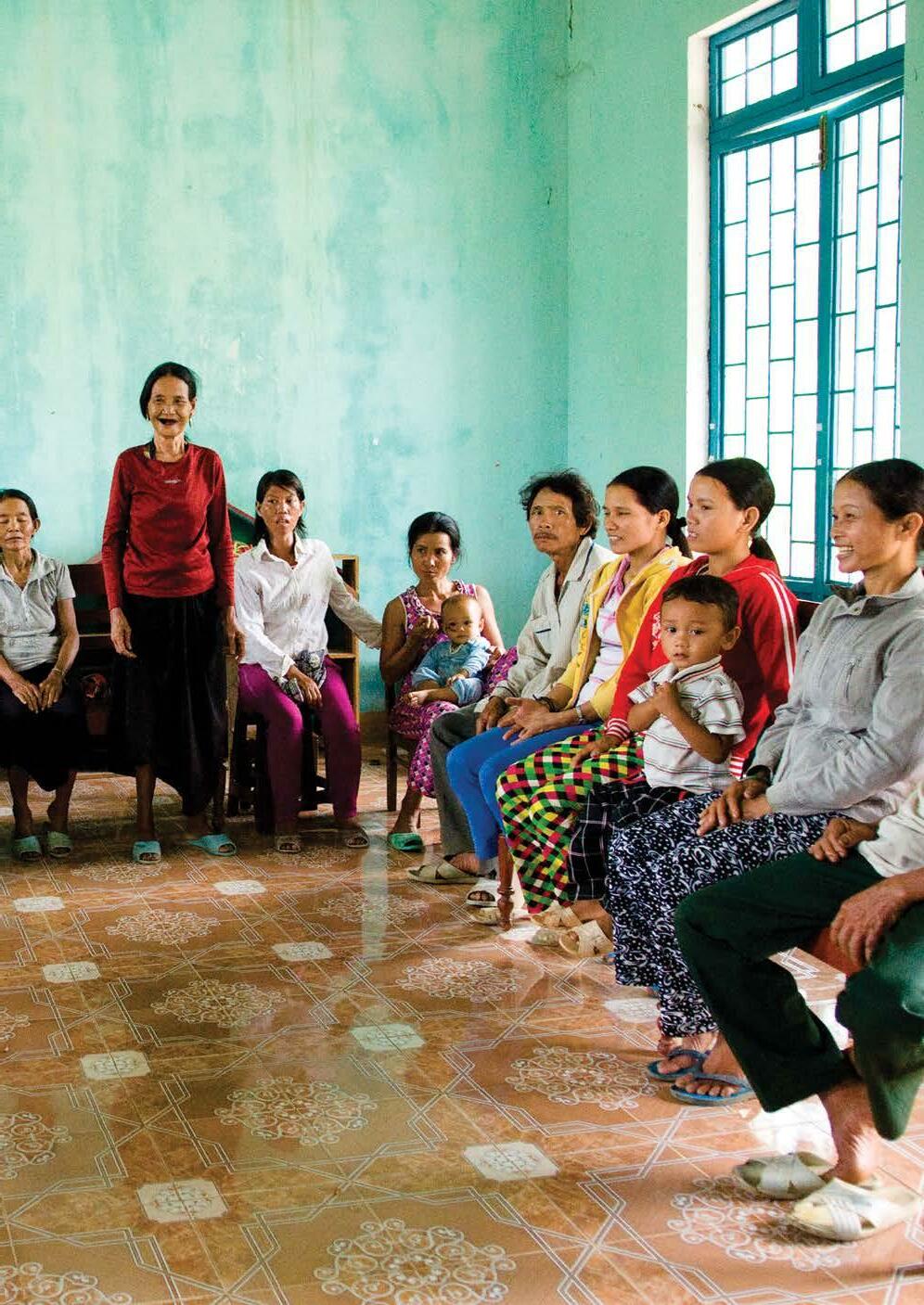
STEP 4 STEP 5 SHARING RESULTS IN THE PLENARY
Time: 25 minutes

Materials: Flip chart of results of activities from each sex-disaggregated group (from step 4)
Marker pens
Sticky tape
Format: Plenary (with the whole group together).
Purpose: Share results and promote common aspirations between women and men.
To make ‘visible’ women’s and men’s workloads and decision making power for household and community WASH.
To identify who mostly takes part in WASH leadership activities in the community.
To encourage increased respect for women’s and men’s work, and a more equitable distribution of work load and influence over household decision making.
To identify any changes in the results and understand how the change came about.

By the end of Step 5, participants should have:
Seen the results (including any changes) in each sex-disaggregated group for workload and decision making for household and community WASH activities
Participate in developing desired changes for women and men for the future
50 Gender and WASH Monitoring Tool STEP 5
WHAT TO DO
5.1 Lead Facilitator to bring the two sex -disaggregated groups together and put up the results for Step 4 from each of the two groups for all to see (average clock card times and decision making perceptions).
5.2 One female facilitator from the women’s group and one male facilitator from the men’s group should report back on the key highlights from each group (5 minutes each). This should include identifying any particular features of the sub-group that stand out (e.g. Of the 3 age groups, the younger women’s group spend the most time undertaking household work relating to WASH). Lead Facilitator to highlight the main commonalities and differences for the two groups.
Monitoring question:
The facilitator’s should highlight any changes between the results of previous visits with the results of the current visit based on the monitoring questions asked in Step 4.
5.3 Put up the flip charts of desired changes (from Step 4) from the women and men’s group next to each other. A female facilitator from the women’s group and a male facilitator from the men’s group should each read out the results from their group. Lead Facilitator to highlight the commonalities and similarities between the two lists (i.e. highlight the shared desired changes for the future) around the 4 key indicators:
Level of shared WASH workload in the household
Level of participation in WASH activities in the community

Level of women’s leadership in the community for WASH
Level of shared decision making in the household
Co-Facilitator or Data Recorder should take time to write up the shared aspirations on a new flip chart paper to leave in the community. Draw some pictures if possible under each aspiration for community members who may be illiterate. Seek to prompt for common ground in the unlikely event that no common aspirations were obtained (e.g. can we agree women should participate in community WASH committees?).
5.4 Lead Facilitator to ASK: How can we put these shared desired changes into action? Prompting question: How could we reduce the burden of the household work for women?
Gender and WASH Monitoring Tool 51 STEP 5
FACILITATOR TIP
Acknowledge children but explain why this conversation is with women and men, as we do not want to place children in a difficult situation.
Do not blame men or women.
Do not use difficult language like ‘gender’ and ‘gender equality’. Focus instead on opportunities and barriers and how these can be managed to benefit both women and men and their families.
52 Gender and WASH Monitoring Tool STEP 5
RECORD SHEET 5 SHARING RESULTS IN THE PLENARY
Only one copy of this record sheet is required to be completed for this step.
Village name
Commune; District; Province
Date
Name of Lead Facilitator
Name of Data Recorder (if different)
Record the common or similar themes identified in the desired changes for women and men around the 4 indicators:
Level of shared WASH workload in the household
Level of participation in WASH activities in the community
Level of women’s leadership in the community for WASH
Level of shared decision making in the household
How can we put these desired changes into action?
RECORD SHEET 5 Gender and WASH Monitoring Tool 53
54 Gender and WASH Monitoring Tool RECORD SHEET 5
STEP 6 CLOSE THE MEETING
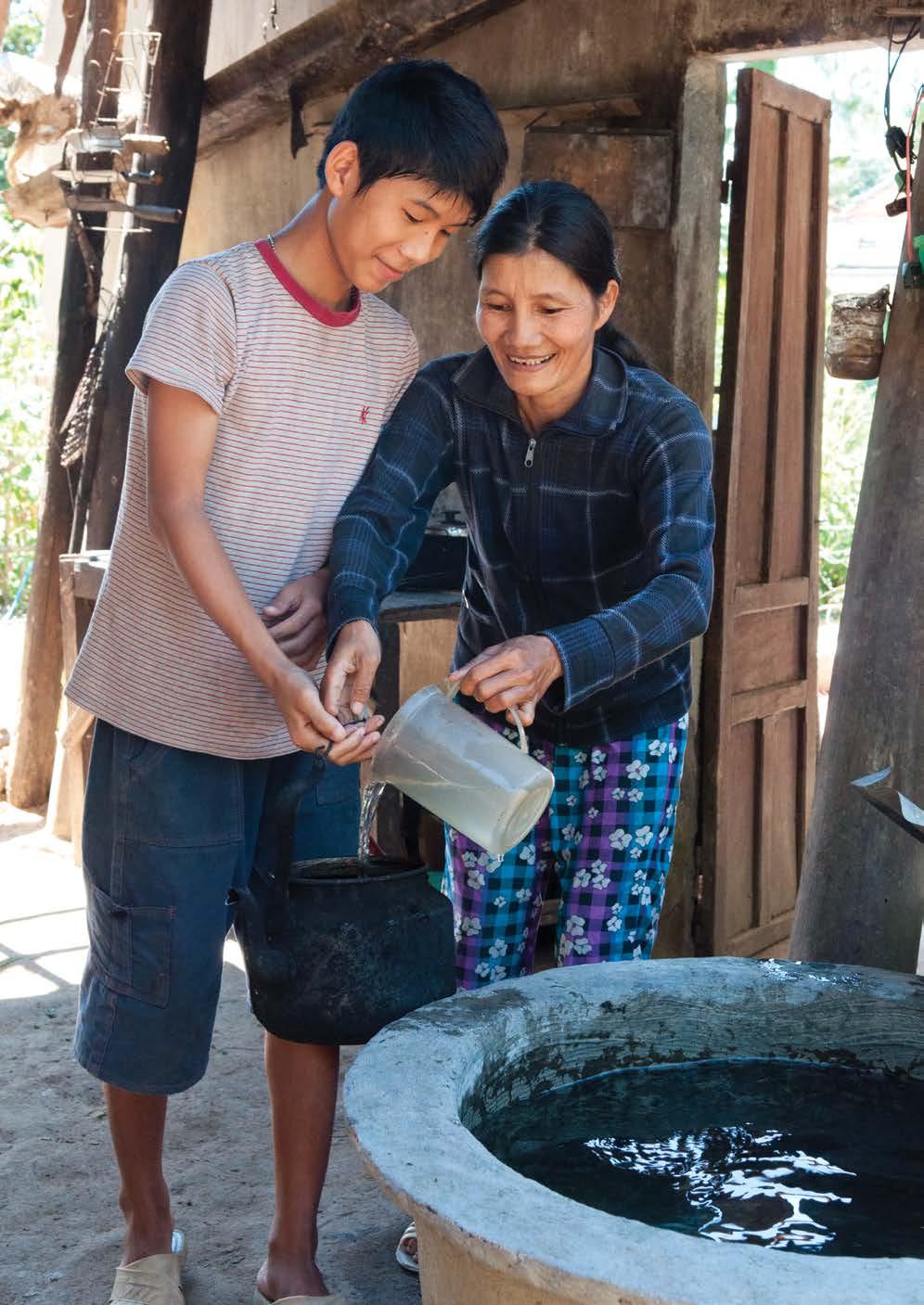
STEP 6 CLOSE THE MEETING
Time: 5 minutes

Materials: None
Format: Plenary (with the whole group together)
Purpose: To close the monitoring activity

By the end of Step 5, participants should have:
Understand the purpose of their participation. Gain enjoyment and a sense of improvement about gender dynamics from the experience
Be aware that this process is ongoing and follow up meetings are required.
56 Gender and WASH Monitoring Tool STEP 6
WHAT TO DO
6.1 Thank the community for providing their time. Explain that their participation was valuable and that it will bring many long term benefits for improving the WASH situation for women and men.
6.2 Invite community members to provide any comments on the process and ask any questions. These should be recorded on record sheet one.
6.3 Advise the community of the next planned visit and the process for community feedback.
6.4 End the visit on a positive, encouraging note. Undertake and acknowledge local traditions as required to close meetings for this context.
Gender and WASH Monitoring Tool 57 STEP 6
58 Gender and WASH Monitoring Tool STEP 6
STEP 7 ANALYSIS OF COMMUNITY’S CURRENT SITUATION AND PROGRESS TOWARDS GENDER EQUALITY
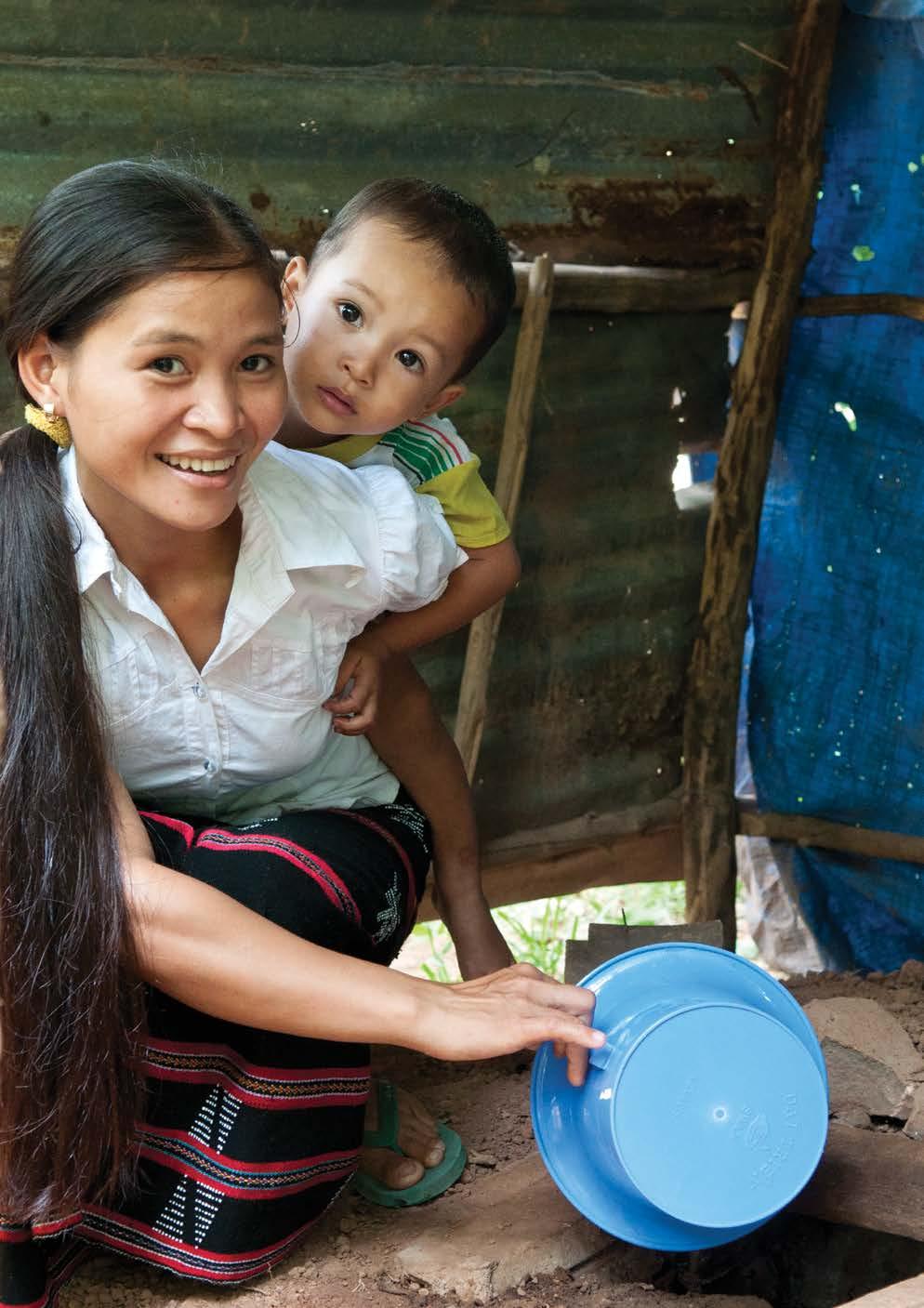
STEP 7 ANALYSIS OF COMMUNITY’S CURRENT SITUATION AND PROGRESS TOWARDS GENDER EQUALITY
To be carried out after the community meeting by Facilitators and Data Recorders
Time: 30 minutes

Materials: All completed record sheets for Steps 1-6 and highlighter pens.
Format: Facilitators’ meeting – small group work
Purpose: To understand, document and assess the community’s gender relations against the 4 indicators and record the changes over time;
For the facilitation team to debrief on the process and approach.

60 Gender and WASH Monitoring Tool STEP 7
WHAT TO DO
7.1 After undertaking steps 1-6 the Facilitation Team (Facilitators and Data Recorders) should find a quiet location to have a discussion. Ideally, this should be on the same day as the community meeting.
7.2 Group analysis of gender relations in the community:
The Lead Facilitator should lead the discussion on the analysis of the GWMT data.
The Lead Facilitator to refer the team to Record Sheet No. 7, to capture the team’s rating on the community’s perspective of current gender relations. The team should work through each of the four indicators, circling ONE rating per indicator that best describes the situation in the community. Provide the evidence and why your team made each selection referring back to previous steps to provide evidence for your rating (particularly from Record Sheet 4 and 5). We also want to highlight any key observations and themes emerging from the group discussions in the previous steps to support our gender analysis of the current situation in WASH communities and future programming.
From key observations and highlights as a group, discuss and highlight:
Any observations or themes, that emerged for you in the group discussions about WASH related work, decision making, and in relation to women’s leadership in WASH, giving examples. Give attention to identifying any major differences or similarities between women’s and men’s views and that of other groups. For example, what did the group discussion reveal about:
a. What are some of the consequences of inequitable WASH practices in this community?
b. What are some of the attitudes and beliefs about the roles and responsibilities of women and men in WASH, women’s and men’s role in decision making, and women’s leadership? What are any differences or similarities in attitudes and beliefs between women and men?
c. What are the challenges and opportunities to progress gender equality in this community?
Gender and WASH Monitoring Tool 61 STEP 7
Social norms are shared beliefs about what is typical and appropriate roles and behaviour in a group of people, including women, girls, men and boys. Social norms are like informal rules, which also influence (and are influenced by) formal rules such as laws and regulations. Norms shape expectations and attitudes and can sustain and prescribe gender inequality. Around the world, social norms on gender shape the unequal status of women and girls and the expectations of their role in society (Reference: Plan International Global Policy Gender Equality and Inclusion).
Monitoring question: If this is a follow up visit, the team should reflect on any changes (positive and negative) that have occurred in the attitudes and beliefs of women and men and/or other groups expressed in group discussions and in the community meeting more broadly, and why. Analyse any major differences between the different groups and the community’s perspective and the previous monitoring data. Also reflect on the gender equality aspirations expressed by the groups and in the community meeting and in any progress towards this or any negative trends.
Assure the team that there is no expectation or pressure to see changes in the indicators in the first implementation of the GWMT. In fact there may be negative effects of WASH programming on gender relations. Change takes a long time and it is important for the project implementation team to know if their methods are effective in creating change. Even if there is no change, please ensure ratings are based on the data collected through the consultation.
7.4 Debriefing on the GWMT process:
The Lead Facilitator will guide a discussion about the group’s experience in the facilitation/data recording during the GWMT, by asking the following questions:
What worked well? Why?
What needs improvement? Why?
Examples could be: Support from facilitators; Manner of using materials; data recording, Managing time; Style of speaking, participatory techniques etc.
Document the responses to these questions on Record Sheet No.7. This information will be used for preparation in the next round of GWMT monitoring visit and to adapt the tool.
7.5 Documentation: Provide copies of all the record sheets to the Monitoring and Evaluation Co-ordinator and key focal points of the project (and government department if relevant). Note any recommendations for follow up for the current WASH program/project.

62 Gender and WASH Monitoring Tool STEP 7
NOTE
RECORD SHEET 7 ANALYSIS OF COMMUNITY’S CURRENT SITUATION AND PROGRESS TOWARDS GENDER EQUALITY
Only one copy of this record sheet is required to be completed for this step.
Lead Facilitator
Co-Facilitators and Data Recorders
Overall gender indicator ratings
For each of the four indicators, circle ONE that the team agreed on. Provide the evidence and why your team made each selection (based Record Sheets). These ratings were developed by Plan Australia based on good practices and gender literature. Explanation of ratings may need to be further nuanced to be appropriate for a Project’s context.
Indicator 1:
Shared workload in regular household WASH activities
Rating: (Circle ONE)
Explanation of rating
Did not meet expectations Met expectations Exceeded expectations
Day to day household WASH work is always done by women and girls
Day to day household WASH work is shared between women, men, girls and boys in the household (e.g. females and males within a household share WASH workload which may not be necessarily by 50:50 split)
Evidence and WHY rating was chosen?
Day to day household WASH work is equitably shared between women, men, girls and boys in the household, and challenges gender stereotypes
RECORD SHEET 7 Gender and WASH Monitoring Tool 63
Indicator 2:
Level of participation in WASH activities in the community
Rating: (Circle ONE) Did not meet expectations Met expectations Exceeded expectations
Explanation of rating
Women’s participation in community WASH activities is limited
Women and men participate equally in community WASH activities
Evidence and WHY rating was chosen?
Women’s and men’s participation is in community WASH activities is equally valued
Indicator 3: Level of shared WASH decision making in the household
Rating: (Circle ONE)
Explanation of rating
Did not meet expectations Met expectations Exceeded expectations
Men make all major decisions about household WASH and women are not consulted (or consulted in a limited way)
Evidence and WHY rating was chosen?
Women and men both have a say about major household WASH decisions
Women and men share final decisions about major household WASH
64 Gender and WASH Monitoring Tool RECORD SHEET 7
Indicator 4: Level of women’s leadership in the community around WASH
Rating: (Circle ONE)
Explanation of rating
Did not meet expectations
Formal leadership positions in relation to WASH are all or mostly held by men
A number of women have formal leadership roles in WASH committees and structures, and there’s a commitment for equal representation
Women and men are equally engaged in formal WASH leadership positions and women hold equal decision making power with men in WASH meetings and committee structures (e.g. decisions about budget resource allocation)
Evidence and WHY rating was chosen?
Group gender analysis points:
Record key themes and important examples regarding WASH workloads, decision making and leadership, attitudes and beliefs, similarities and major differences in the views and aspirations of women’s and men’s (or other) groups.
RECORD SHEET 7 Gender and WASH Monitoring Tool 65
Met expectations Exceeded expectations
Monitoring question:

Have there been any major changes since the last visit across any of the key indicators? What are they? Why did the come about? Were the changes positive or negative? Note any differences between the community perspective and the previous monitoring data.
Feedback regarding the GWMT process:
What worked well? Why?
What needs improvement? Why?
— What could we do differently next time?
66 Gender and WASH Monitoring Tool RECORD SHEET 7
STEP 8 INTEGRATION WITH THE MEL SYSTEM AND DATA UTILISATION
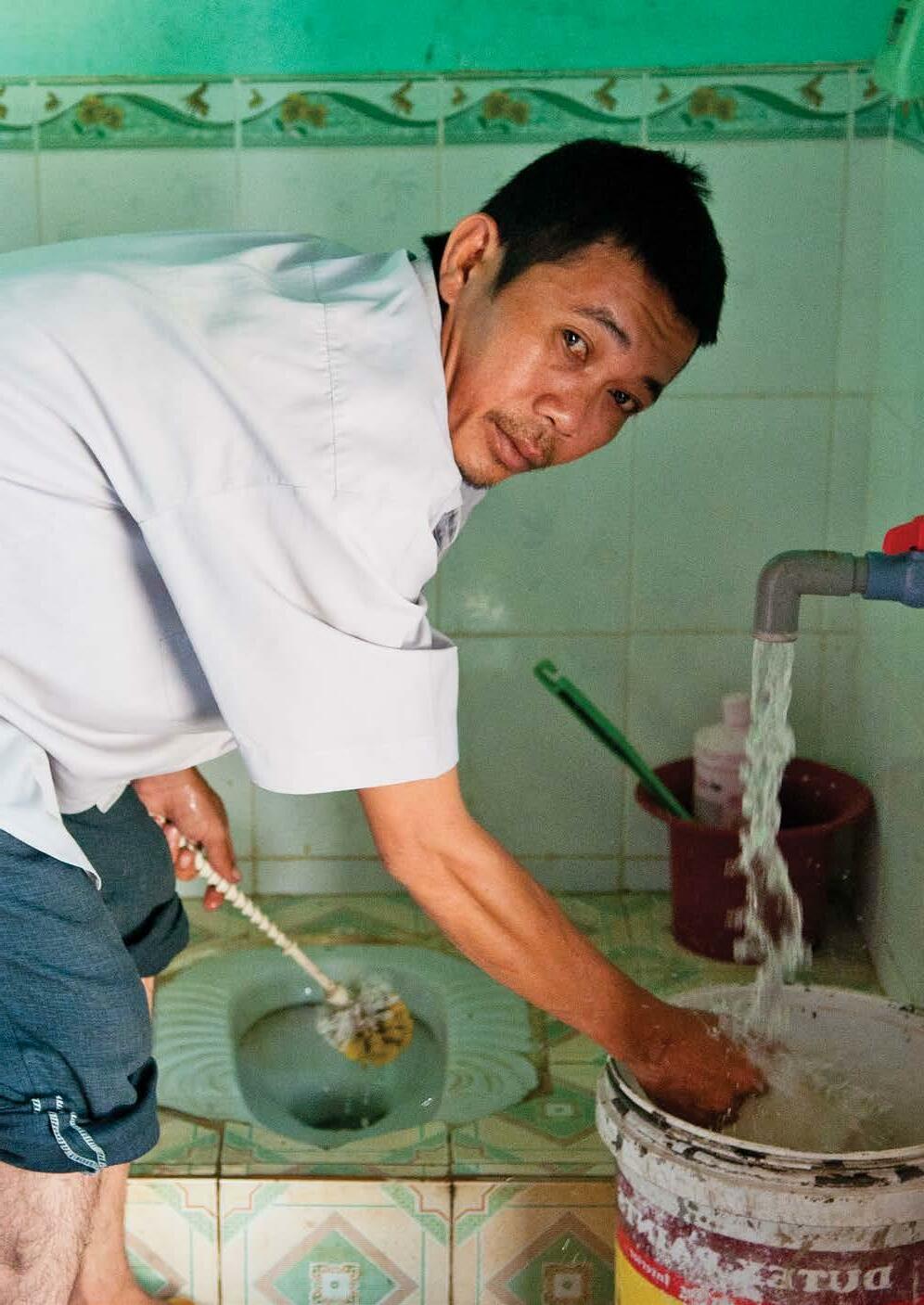
STEP 8
INTEGRATION WITH THE MEL SYSTEM AND DATA UTILISATION
Purpose: To collate and analyse the results of the GWMT data collected in each community
To monitor and compare results at different levels and over time and to indicate if activities and strategies in the WASH program are effective
To reflect and learn from the data
To report and disseminate the data to key stakeholders (including the community)

To use the data to inform responsive gender and WASH planning processes
The MEL process, including who should be involved, timing and how the data will be integrated into the WASH MEL system should have been developed as part of the preparation steps for the GWMT implementation.
68 Gender and WASH Monitoring Tool STEP 8
WHAT TO DO
The MEL Coordinator/Project Manager (and preferably with other relevant key stakeholders) should undertake the following steps. The process may vary according to MEL practices in each project/program and should have been developed as part of the preparation steps for the GWMT implementation.
8.1 Collation and Analysis
Using the GWMT record sheets record and analyse the data as evidence against the four indicators.
Record the quantitative data in record sheet 4 under each indicator for men and women
Analyse these results using the participatory analysis recorded in Record Sheet 4 and 5). Identify and collate the key themes and issues raised by men and women in relation to the four indicators. Themes should have already been highlighted by the GWMT facilitation. Review Record Sheet 7 for additional analysis by the GWMT Facilitators. Look for recurring themes and analyse the differences between men and women and analyse. The analysis could be collated at various levels, as required for monitoring and planning purposes (e.g. location, indicators, themes, barriers etc).
This monitoring data should be entered into the M&E system to track changes over time against the four indicators and to develop actions in response to the data.
8.2 Reflection and learning
The project implementation team (and preferably other key stakeholders) should review and make sense of the GWMT data, alongside other monitoring information to identify key areas of learning and change and to measure regarding the effectiveness of WASH interventions for women and men in the project area (e.g. this could be done in a project’s/program’s annual learning meeting before planning for the next implementing year). The following represents key questions for facilitated group reflection and analysis of GWMT data collected from communities in a project/program setting:
Gender and WASH Monitoring Tool 69 STEP 8
KEY QUESTIONS
3 What are the aspirations identified between women and men across different communities? Are there differences in the aspirations for women and men? Are there differences between communities?
3 Is there more change, progress towards change, or opportunities for change reflected in some communities compared to others?
3 Who or what is likely to support opportunities for change and who is likely to resist? Why do you think this is the case? What are the similarities and differences across communities? How can your project (or your organisation) address some of these challenges and opportunities? Who else needs to be involved?
3 To what extent does our WASH project reflect or challenge discriminatory attitudes, beliefs and practices in its structure, staffing and operations?
3 To what extent has the GWMT (and other learning) help us reflect/examine our own attitudes and practices around gender equality?
3 How can we build in these learnings into the project’s/program’s planning and implementation?
70 Gender and WASH Monitoring Tool
8.3 Reporting and Dissemination
Use the GWMT data to inform learning and performance reports targeted at various key stakeholders. Reports may include other gender and WASH monitoring information. A dissemination strategy should include ensuring there is a community feedback process. Reporting back to the community is important so the community can use the data for their own monitoring and planning purposes. Consideration should be made to include the use of visual reports such as a poster with graphs/pictures, etc.
8.4 Data use in planning processes
Use the GWMT data to inform learning and performance reports targeted at various key stakeholders. Reports may include other gender and WASH monitoring information. A dissemination strategy should include ensuring there is a community feedback process. Reporting back to the community is important so the community can use the data for their own monitoring and planning purposes. Consideration should be made to include the use of visual reports such as a poster with graphs/pictures, etc.
Build learnings into project/program plans and documents (e.g. annual plans, project’s Theory of Change) and allocate associated budget as needed.
Gender and WASH Monitoring Tool 71 STEP 8
72 Gender and WASH Monitoring Tool STEP 8
ACCOMPANYING DOCUMENTS
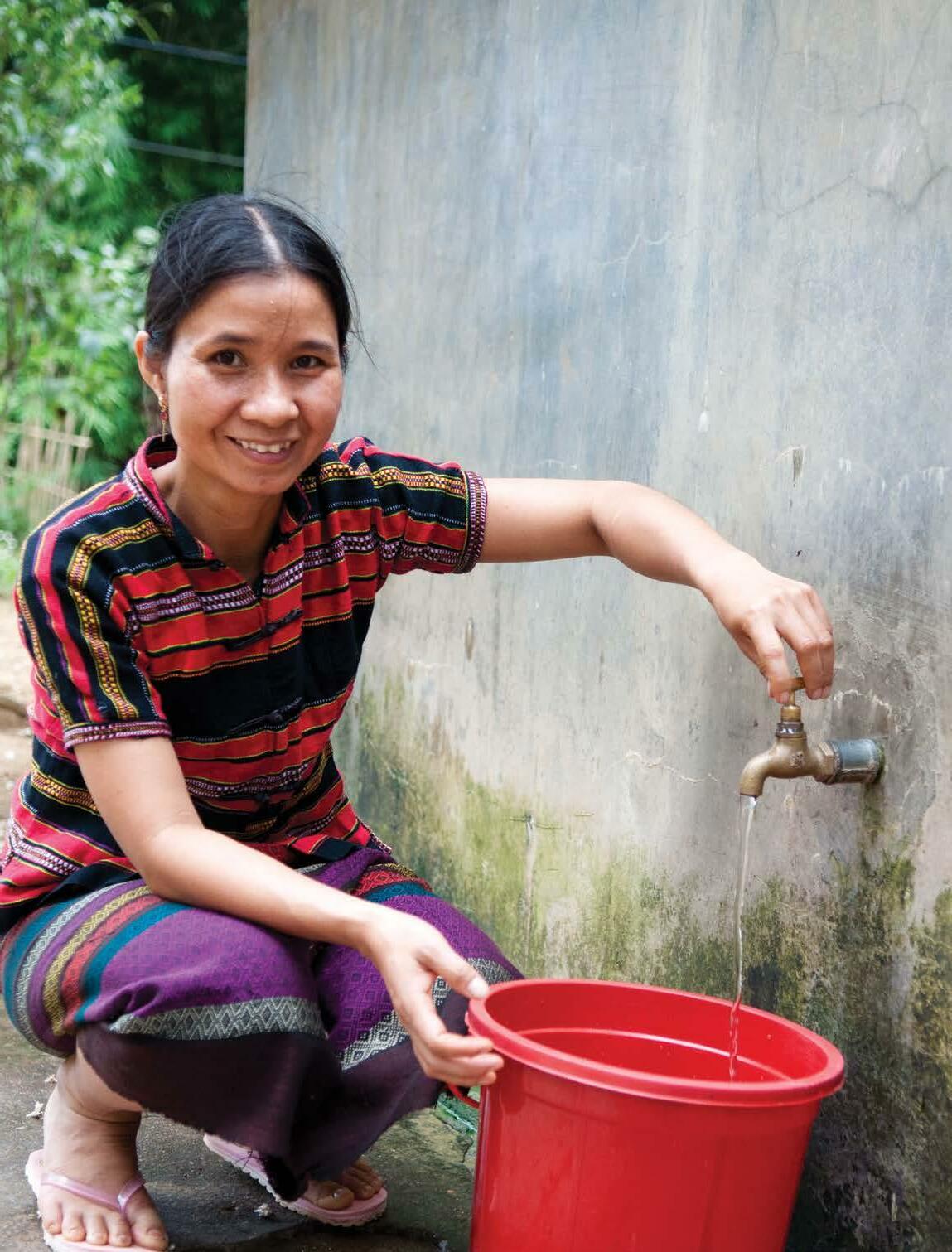
MATERIALS CHECKLIST
RESOURCES FOR COMMUNITY MEETINGS
6 sets of WASH photo cards adapted to your context (3 women set and 3 men set) in A5.
6 sets of blank cards in A5 (to write activities that may come up in discussion and are not on the photo cards)
18 Clock cards translated to local language
Whiteboard or marker pens
At least 120 markers (e.g. kidney beans, stones, water bottle tops with no logos). Tip: Pre-bag 20 markers per group prior to the community meeting to save time counting out within the meeting.
Rolls of flip chart paper
Sticky tape
RESOURCES NEEDED FOR FACILITATORS AND DATA RECORDERS
GWMT - 1 per Facilitator and Data Recorders (consider translating to local language)
6 x Record sheets and pens (consider translating to local language)
Highlighters (for analysis in step 7). Copies of record sheets can be easily photocopied or printed as needed from the resource section at the back of this guidebook.
74 Gender and WASH Monitoring Tool
HOUSEHOLD ACTIVITIES
Range of time spent each day (HOURS)
Average of time spent each day (HOURS)
COMMUNITY ACTIVITIES
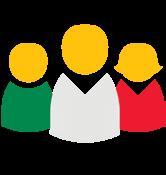

Range of time spent each month (HOURS)
Average of time spent each month (HOURS)
LEADERSHIP ACTIVITIES
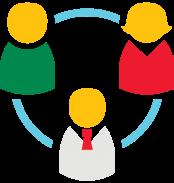
Range of time spent each month (HOURS)
Average of time spent each month (HOURS)
Gender and WASH Monitoring Tool 75
BASE PHOTOS
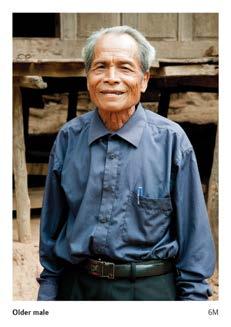
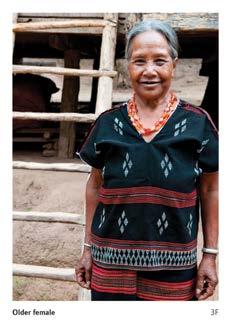
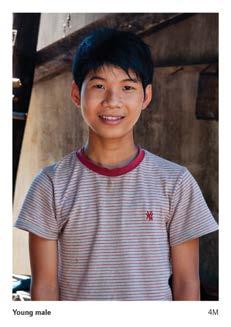
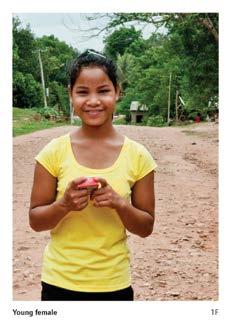
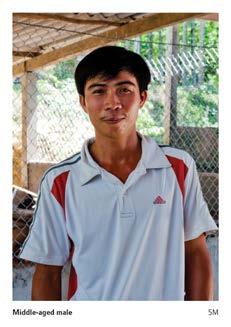
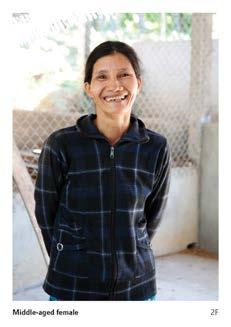
76 Gender and WASH Monitoring Tool ACCOMPANYING DOCUMENTS
PHOTO CARDS
Young female
Young male
Middle-aged female
Middle-aged male
Older female
Older male
HYGIENE
Protecting drinking water
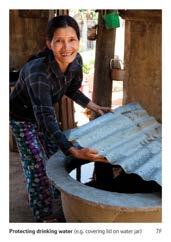
Female’s photo card set
Male’s photo card set
Hygienic food preparation
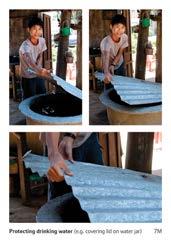
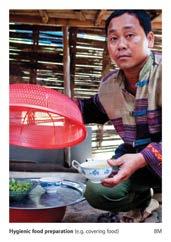
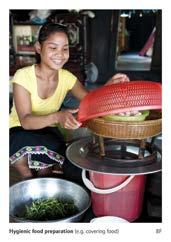
Female’s photo card set
Male’s photo card set
ACCOMPANYING DOCUMENTS Gender and WASH Monitoring Tool 77
SANITATION
Assisting a child to use a toilet
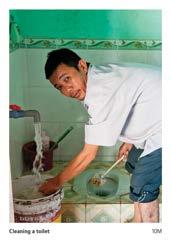
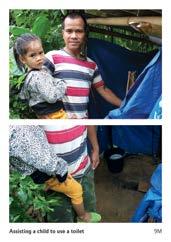
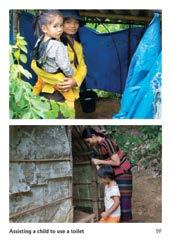
Female’s photo card set
Male’s photo card set
Cleaning a toilet
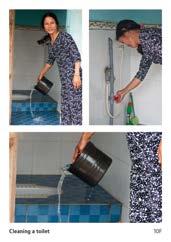
Female’s photo card set
Buying household WASH related items
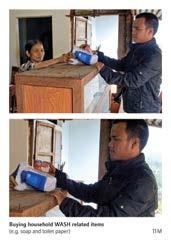

Female’s photo card set
Male’s photo card set
Male’s photo card set
78 Gender and WASH Monitoring Tool ACCOMPANYING DOCUMENTS
SANITATION
Construction or maintenance of a toilet
Female’s photo card set
Collecting local materials for construction of a toilet
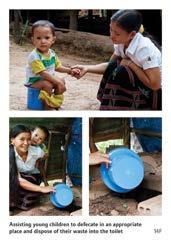
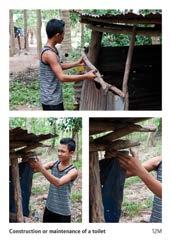
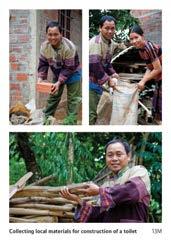
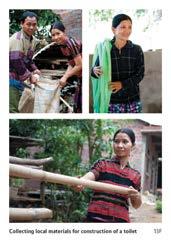
Female’s photo card set
Male’s photo card set
Male’s photo card set
Assisting young children to defecate in an appropriate place and dispose of their waste into the toilet
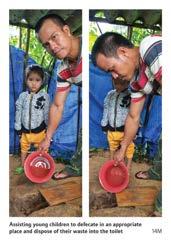
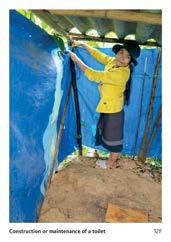
Female’s photo card set
Male’s photo card set
ACCOMPANYING DOCUMENTS Gender and WASH Monitoring Tool 79
SANITATION
Managing menstrual hygiene
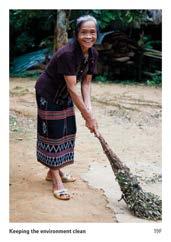
(Note that the men’s set does not have this photo card)
Female’s photo card set
ENVIRONMENT
Keeping the environment clean
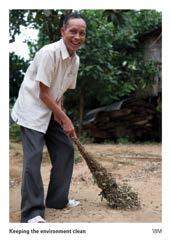
Female’s photo card set
Male’s photo card set

80 Gender and WASH Monitoring Tool ACCOMPANYING DOCUMENTS
WATER
Collecting water
Female’s photo card set
Male’s photo card set
Boiling/treating water
Female’s photo card set
Maintenance activities for water (e.g. cleaning water source, fixing/repairing water pipe/pump)
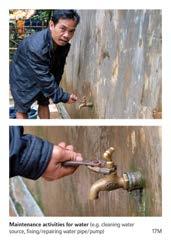
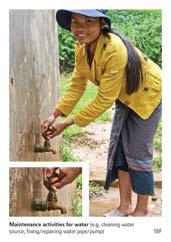
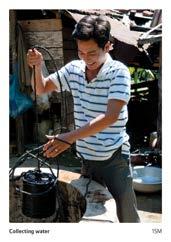
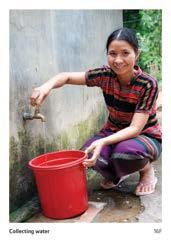
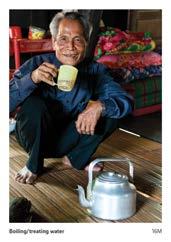
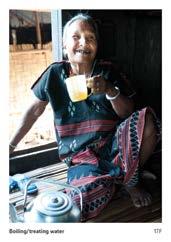
Female’s photo card set
Male’s photo card set
Male’s photo card set
ACCOMPANYING DOCUMENTS Gender and WASH Monitoring Tool 81
COMMUNITY
Community meetings related to WASH
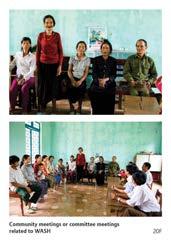

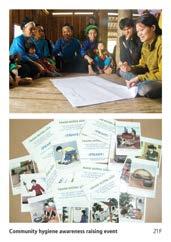

Female’s photo card set
Community hygiene awareness raising event
Female’s photo card set
Male’s photo card set
Male’s photo card set
82 Gender and WASH Monitoring Tool ACCOMPANYING DOCUMENTS
RECORD SHEET 1 PREPARATION AND INTRODUCING THE ACTIVITY TO THE COMMUNITY
To be filled out by the Lead Facilitator (in liaison with the MEL coordinator/Project Manager) prior to the meeting as part of the preparation for the session. This includes documenting/attaching previous GWMT data and discussing the findings and learning from the previous visit with the Facilitation team prior to the meeting (if applicable).
Village name:
Commune; District; Province:
Frequency of GWMT visits:
Date of GWMT visit:
Date of previous GWMT visit (if applicable):
Next data of GWMT visit planned:
Lead Facilitator:
Name of Co-Facilitators
Young women’s group
Middle aged women’s group
Older women’s group
Young men’s group
Middle aged men’s group
Older men’s group
Name of Data Recorders
RECORD SHEET 1 Gender and WASH Monitoring Tool 83
Summary of results and learning from previous GWMT visit:
If available, attach the previous monitoring report for this location. Note key areas from the previous visit to follow up in this monitoring visit.
Process question:
If this is a first visit, what are likely to be the difficulties in facilitation the GWMT?
Monitoring question:
If this is a follow up visit, were there any previous challenges with facilitating the GWMT at this location? What strategies could be used to support the monitoring visit in this location (any adaptations etc)? Go over the steps and roles with the team, including questions required for baseline visit and those for ongoing monitoring purposes.
To be filled out at the community:
No. of participants Female Male

Other comments
e.g. any concerns/questions raised by the community at GWMT meeting
84 Gender and WASH Monitoring Tool RECORD SHEET 1
RECORD SHEET 2
IDENTIFYING WOMEN’S AND MEN’S WORKLOAD IN HOUSEHOLD AND COMMUNITY WASH ACTIVITIES
This record sheet is required to be completed for each sub-group.
Sub-group for this record sheet (e.g. older women, young men)
Number of people in this sub-group
Name of Co-Facilitator



Name of Data Recorder (if different)
Time Spent
Household Activities Community Activities Leadership Activities
Range of time spent each day (hours)
Range of time spent each month (hours)
Range of time spent each month (hours)
Average time spent each day (hours)
Average time spent each month (hours)
Average time spent each month (hours)
RECORD SHEET 2 Gender and WASH Monitoring Tool 85
Group Analysis (Note. Further analysis on results in step 4)
Is the range large or small from the perspective of the sub-group? If large, discuss why the experiences differ? (E.g. single headed household, large family, etc.)
86 Gender and WASH Monitoring Tool RECORD SHEET 2
Amount of time to complete this activity (total hours)
List of Irregular WASH Activities (include unpaid activities only) Activity
RECORD SHEET 3 ROLES IN HOUSEHOLD WASH DECISION MAKING
This record sheet is required to be completed for each sub-group.
Sub-group for this record sheet (e.g. older women, young men)
Number of people in sub-group
Name of Co-Facilitator
Name of Data Recorder (if different)
RECORD SHEET 3 Gender and WASH Monitoring Tool 87
Household WASH decision
Household member Level of influence
Number of markers per member (out of 20)
Young female
Young male
Middle age female
Middle age male
Older female
Older male
Total 20
Why did the group decide to spread the 20 markers as they are and what does this mean? What does this tell us about who makes decisions? Is this close to the situation in your household? If not, why not? (e.g. female headed households)
88 Gender and WASH Monitoring Tool RECORD SHEET 3
RECORD SHEET 4 PARTICIPATORY ANALYSIS AND IDENTIFYING GENDER EQUALITY ASPIRATIONS
One record sheet per group is required to be completed for this step. This record sheet provides the key data to be used for data collation and ongoing monitoring, analysis and planning purposes.
Sex-disaggregated group (women or men)?
Number of people in this women’s or men’s group?
Name of Facilitator
Name of Data Recorder (if different)
RECORD SHEET 4 Gender and WASH Monitoring Tool 89
Section 1:
Summary of quantitative sex and age disaggregated data against GWMT indicator. This section of the data record sheet can be done after the group session has finished, if needed.
Based on the results on the clock cards, record the range and average of time for the 3 sub groups against the related indicator:
WASH related activity
Indicator 1:
Level of shared WASH world load in the household
Indicator 2:
Level of participation in WASH activities in the community
Indicator 4:
Level of women’s leadership in the community around WASH?
Record the average % around levels of influence across the three sub-groups here (Note any major differences):
Indicator 3: Level of shared decision making in the household level
Household member Level of influence (as a % Number/20)
Young female
Young male
Middle age female
Middle age male
Older female
Older male
90 Gender and WASH Monitoring Tool RECORD SHEET 4
Average time spent
Average time spent
each day (hours)
each month (hours)
N/A
N/A
N/A
Section 2:
Analysis of sex disaggregated results and gender equality aspirations against the four GWMT indicators: the analysis must be recorded during the discussion
Indicator
1: Level of shared WASH workload in
the household
a. Is time spent differently or equally on WASH related household work (consider older and younger, women and men)? Why?
b. Monitoring question:
Have there been any changes to the time spent on WASH related household activities since the last monitoring visit (give time frame e.g. last year)? What was the change? How did it come about? Was the change positive or negative?
c. What is the group’s aspiration around the level of shared household work load?

RECORD SHEET 4 Gender and WASH Monitoring Tool 91
Indicator 2: Level of participation in WASH activities in the community
a. Are levels of participation in community WASH activities different for young, middle aged and older at the community level? Why?

b. Monitoring question:
Have there been any changes in the time spent on WASH related community activities since the last monitoring visit (give time frame e.g. last year)? What was the change? How did it come about? Was the change positive or negative?
c. What enables participation in community WASH activities for:
d. What are the barriers to participation in community WASH activities for:
e. What are the group’s aspirations around the level of participation in WASH activities in the community?
92 Gender and WASH Monitoring Tool RECORD SHEET 4
Women Men
Women Men
Indicator 4: Level of women’s leadership in the community around WASH
a. Are WASH related responsibilities at the community level different for young, middle aged and older? Why?
b. Monitoring question: Have there been any changes to the time spent on WASH related community leadership activities since the last monitoring visit (give time frame e.g. last year)? What was the change? How did it come about? Was the change positive or negative?

c. What enables participation in community leadership activities for: Women Men
d. What are the barriers to participation in community leadership activities for: Women Men
e. What are the group’s aspirations around the level of women’s leadership in the community for WASH e.g. in committee meetings, ‘natural leaders’
RECORD SHEET 4 Gender and WASH Monitoring Tool 93
Indicator 3: Level of shared decision making in the household level
a. Who in the household has the most say in the selected WASH decision? Why?
b. Is this different in some households? If so, why?
c. Monitoring question:
Has there been any changes to levels of WASH related household decision making since the last monitoring visit (give time frame e.g. last year)? What was the change? How did it come about? Was the change positive or negative?
d. What are the group’s aspirations around the level of shared WASH decision-making in the household level?

94 Gender and WASH Monitoring Tool RECORD SHEET 4
RECORD SHEET 5 SHARING RESULTS IN THE PLENARY
Only one copy of this record sheet is required to be completed for this step.
Village name
Commune; District; Province
Date
Name of Lead Facilitator
Name of Data Recorder (if different)
Record the common or similar themes identified in the desired changes for women and men around the 4 indicators:
Level of shared WASH workload in the household
Level of participation in WASH activities in the community
Level of women’s leadership in the community for WASH
Level of shared decision making in the household
How can we put these desired changes into action?
RECORD SHEET 5 Gender and WASH Monitoring Tool 95
RECORD SHEET 7 ANALYSIS OF COMMUNITY’S CURRENT SITUATION AND PROGRESS TOWARDS GENDER EQUALITY
Only one copy of this record sheet is required to be completed for this step.
Lead Facilitator
Co-Facilitators and Data Recorders
Overall gender indicator ratings
For each of the four indicators, circle ONE that the team agreed on. Provide the evidence and why your team made each selection (based Record Sheets). These ratings were developed by Plan Australia based on good practices and gender literature. Explanation of ratings may need to be further nuanced to be appropriate for a Project’s context.
Indicator 1:
Shared workload in regular household WASH activities
Rating: (Circle ONE)
Explanation of rating
Did not meet expectations Met expectations Exceeded expectations
Day to day household WASH work is always done by women and girls
Day to day household WASH work is shared between women, men, girls and boys in the household (e.g. females and males within a household share WASH workload which may not be necessarily by 50:50 split)
Evidence and WHY rating was chosen?
Day to day household WASH work is equitably shared between women, men, girls and boys in the household, and challenges gender stereotypes
96 Gender and WASH Monitoring Tool RECORD SHEET 7
Indicator 2: Level of participation in WASH activities in the community
Rating: (Circle ONE)
Explanation of rating
Did not meet expectations Met expectations
Women’s participation in community WASH activities is limited
Women and men participate equally in community WASH activities
Evidence and WHY rating was chosen?
Indicator 3: Level of shared WASH decision making in the household
Rating: (Circle ONE)
Explanation of rating
Did not meet expectations Met expectations
Men make all major decisions about household WASH and women are not consulted (or consulted in a limited way)
Evidence and WHY rating was chosen?
Exceeded expectations
Women’s and men’s participation is in community WASH activities is equally valued
Women and men both have a say about major household WASH decisions
Exceeded expectations
Women and men share final decisions about major household WASH
RECORD SHEET 7 Gender and WASH Monitoring Tool 97
Indicator 4: Level of women’s leadership in the community around WASH
Rating: (Circle ONE) Did not meet expectations Met expectations Exceeded expectations
Explanation of rating
Formal leadership positions in relation to WASH are all or mostly held by men
A number of women have formal leadership roles in WASH committees and structures, and there’s a commitment for equal representation
Women and men are equally engaged in formal WASH leadership positions and women hold equal decision making power with men in WASH meetings and committee structures (e.g. decisions about budget resource allocation)
Evidence and WHY rating was chosen?
Group gender analysis points:
Record key themes and important examples regarding WASH workloads, decision making and leadership, attitudes and beliefs, similarities and major differences in the views and aspirations of women’s and men’s (or other) groups.
98 Gender and WASH Monitoring Tool RECORD SHEET 7
Monitoring question:
Have there been any major changes since the last visit across any of the key indicators? What are they? Why did the come about? Were the changes positive or negative? Note any differences between the community perspective and the previous monitoring data.
Feedback regarding the GWMT process:
What worked well? Why?
What needs improvement? Why?
—
What could we do differently next time?

RECORD SHEET 7 Gender and WASH Monitoring Tool 99
For further information and to provide feedback, please contact Plan International Australia WASH team at WASH@plan.org.au

























































